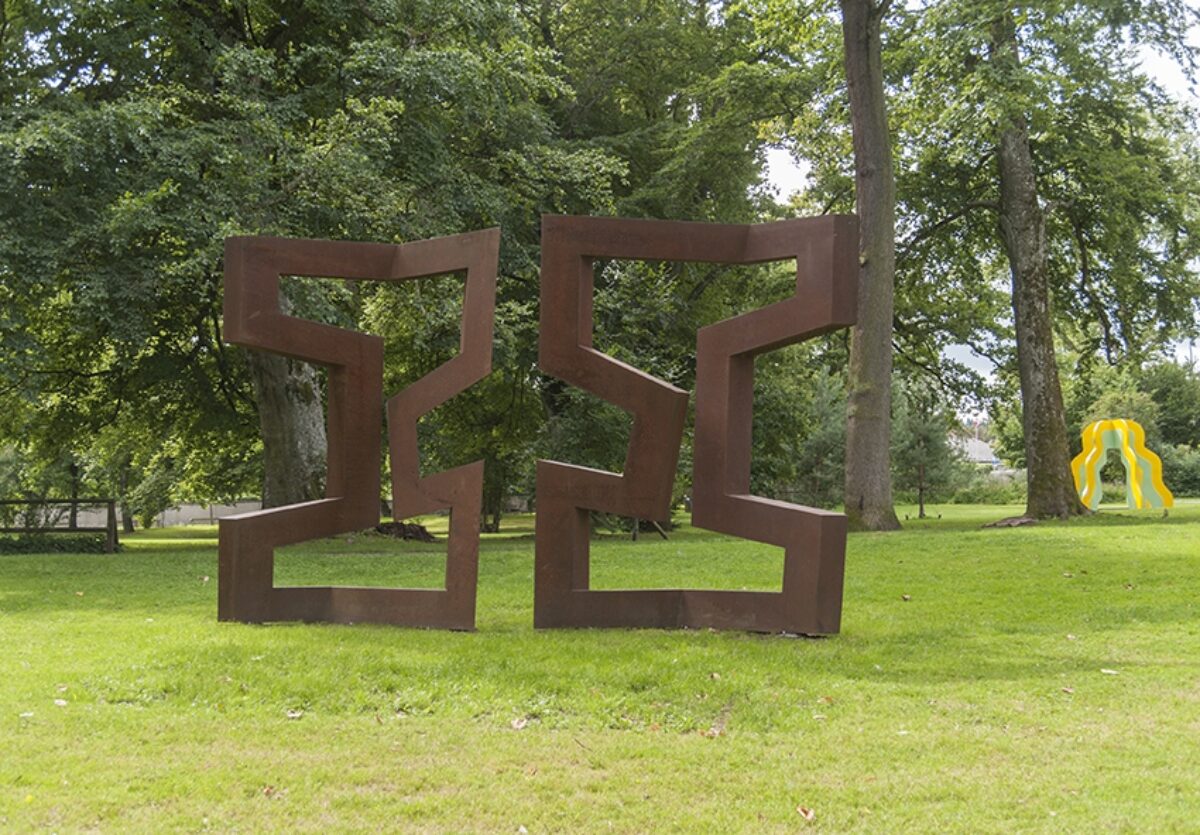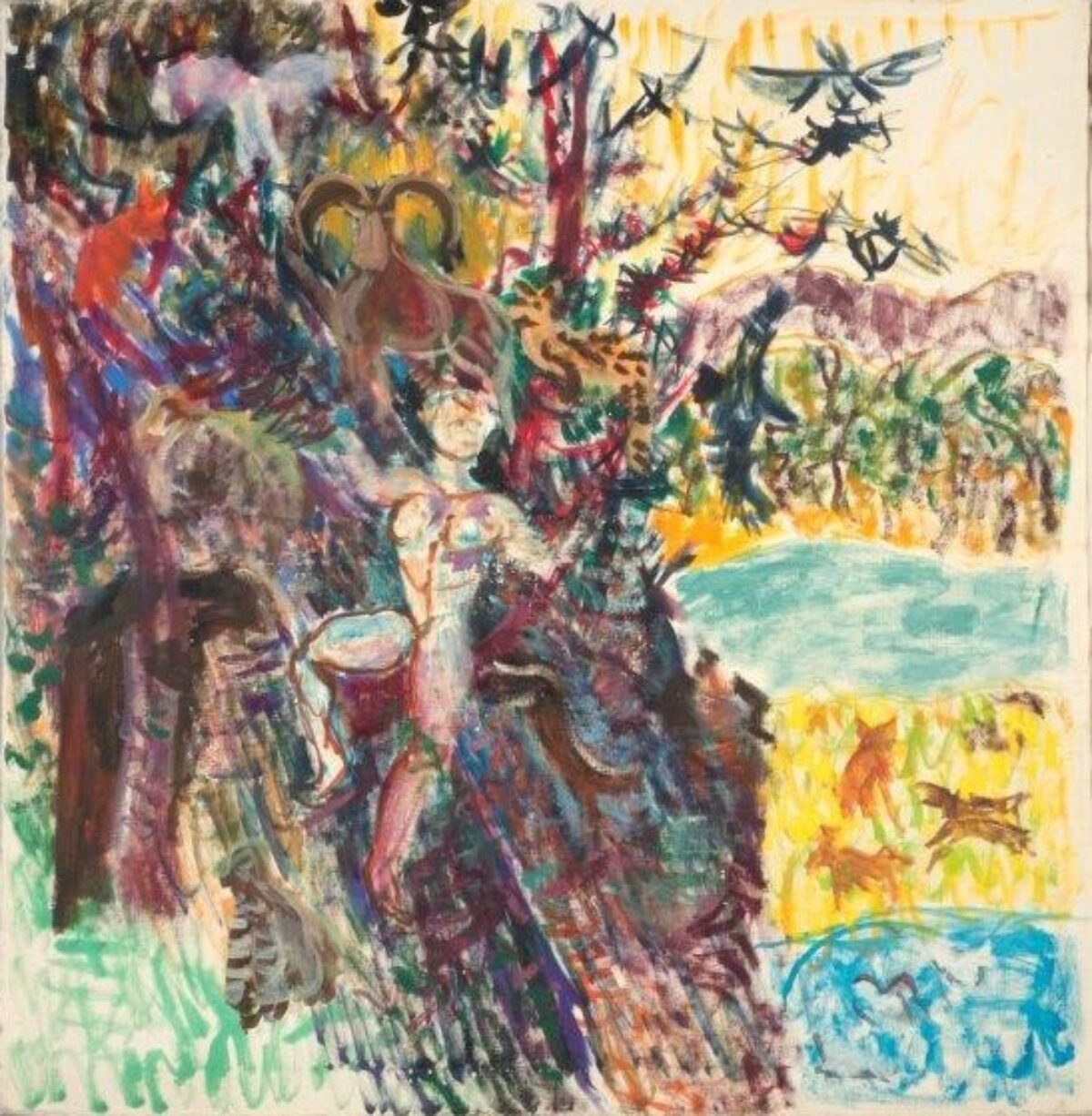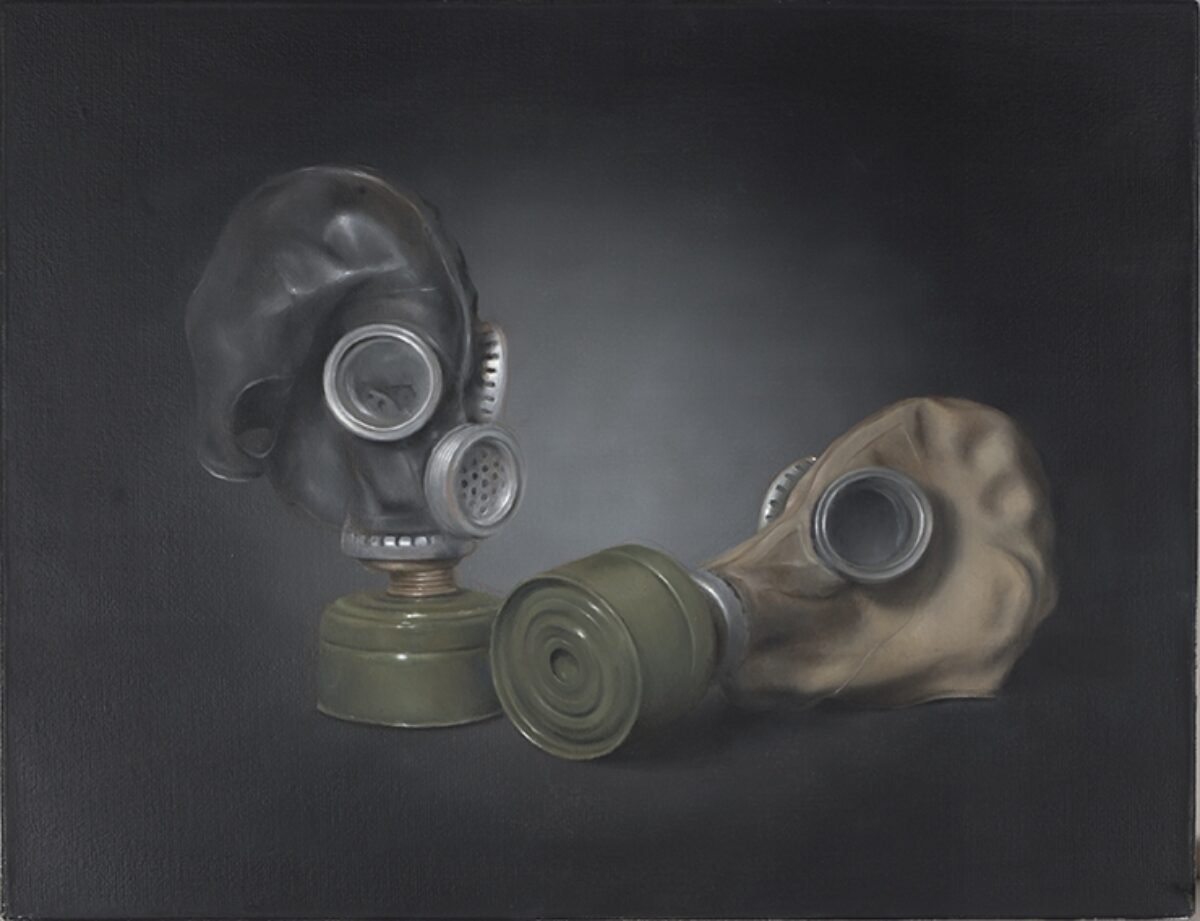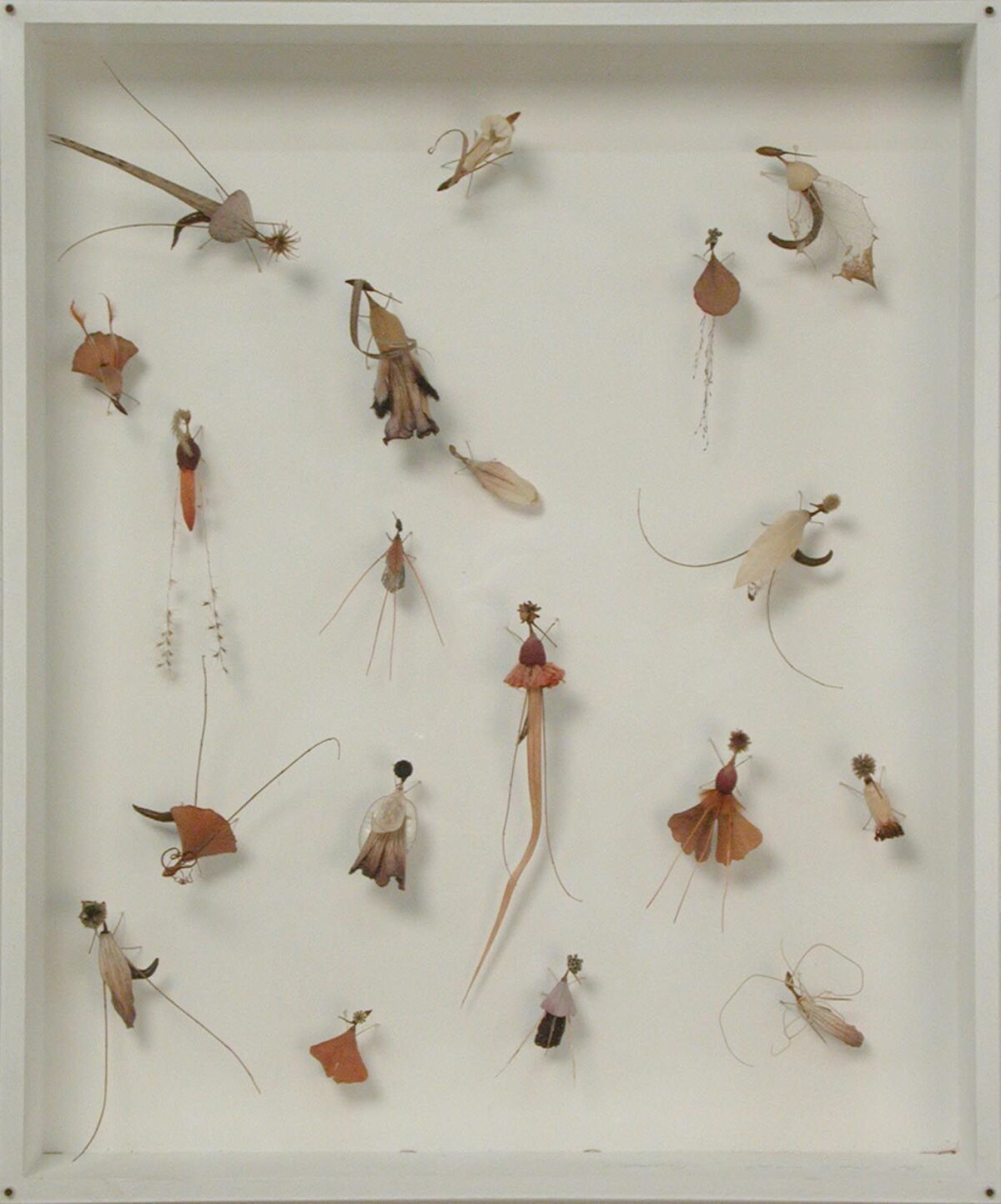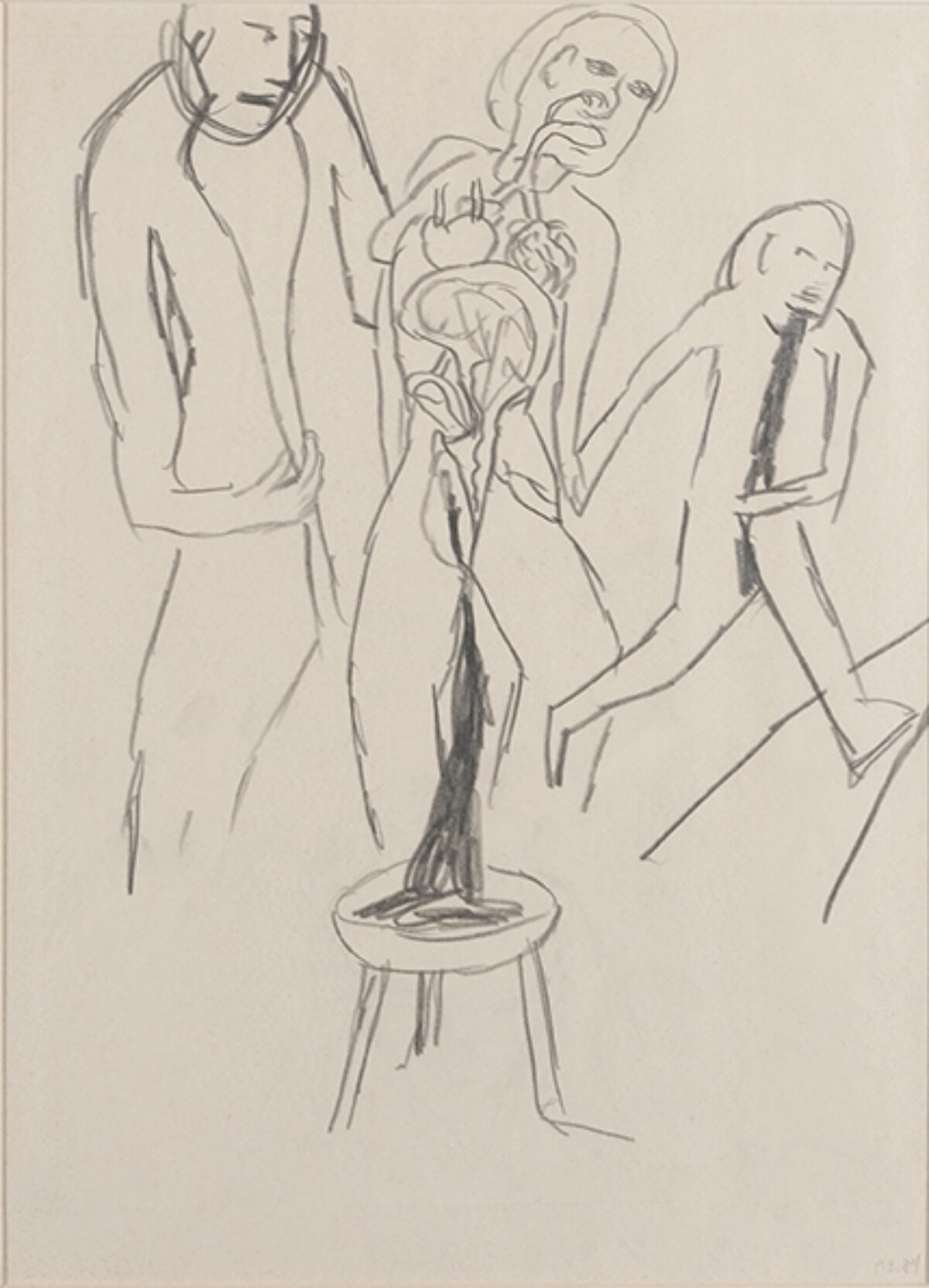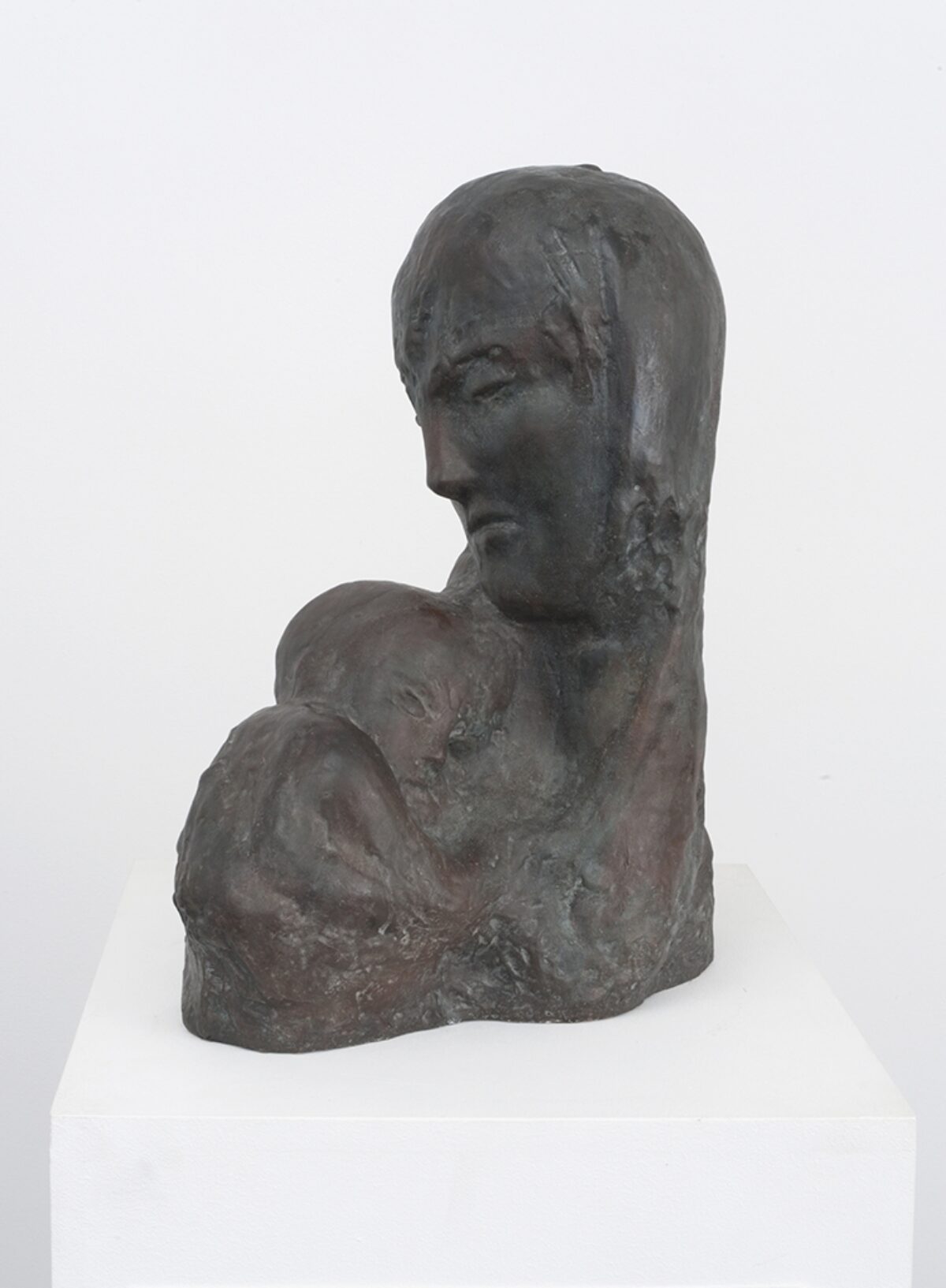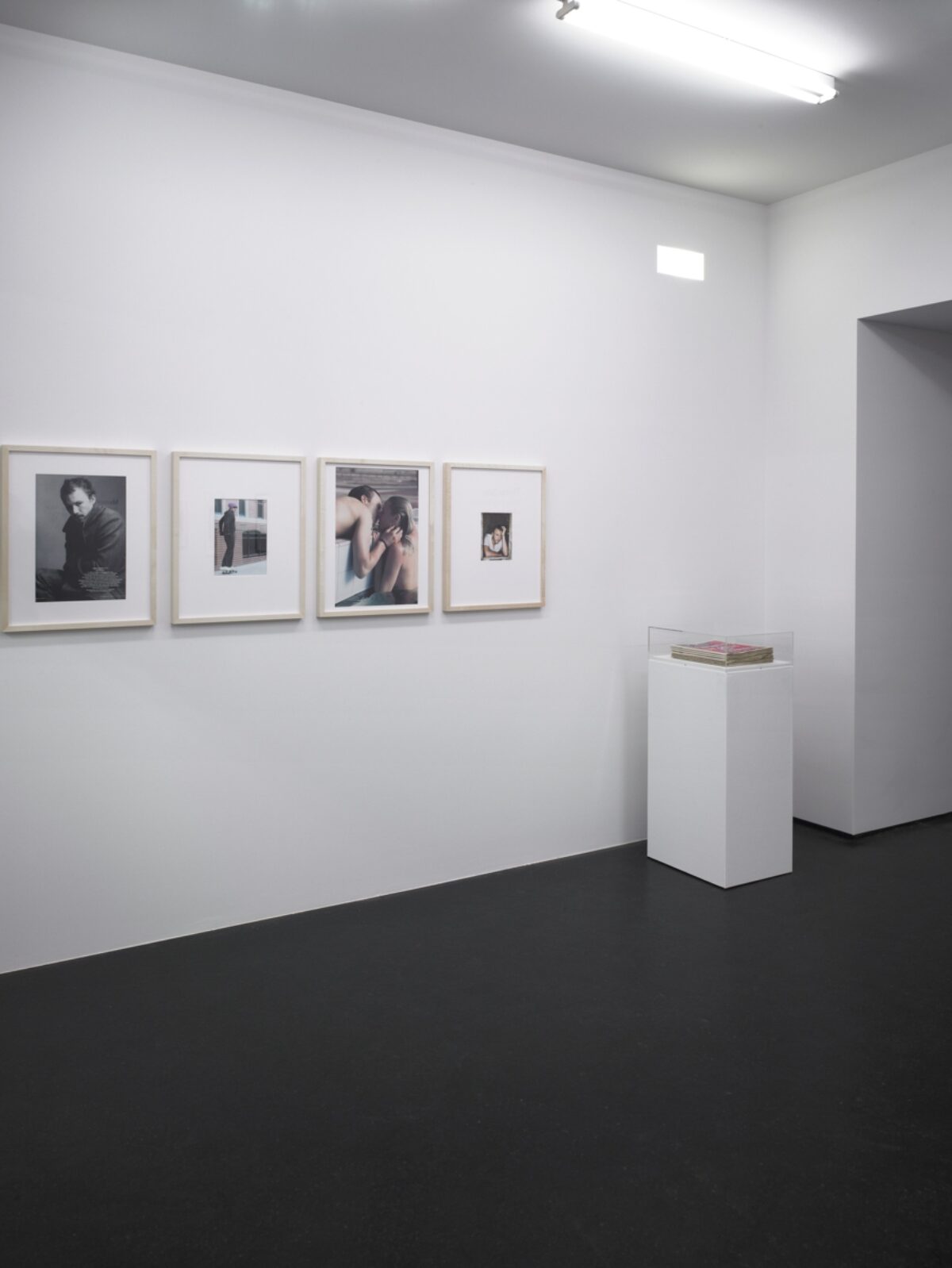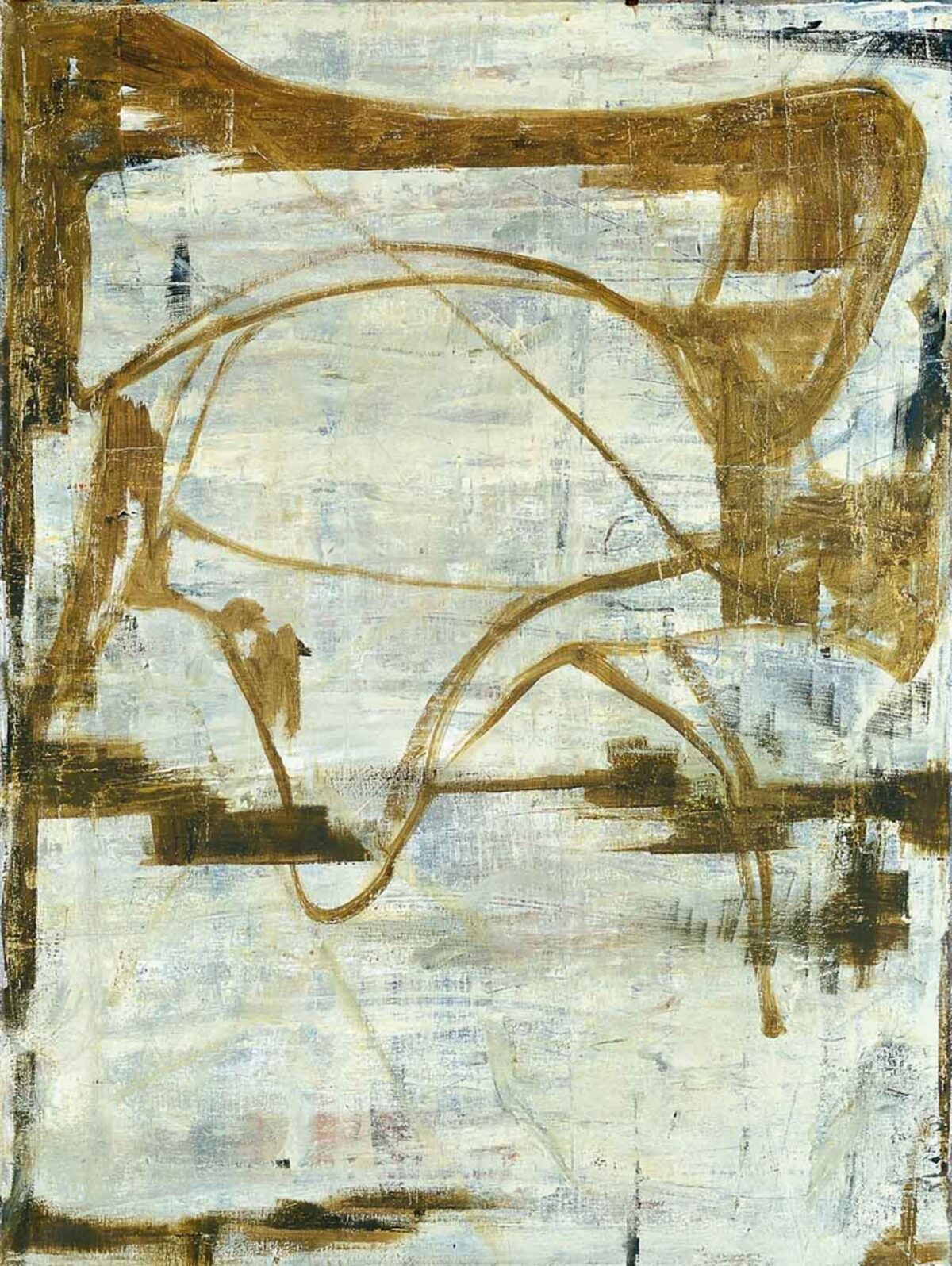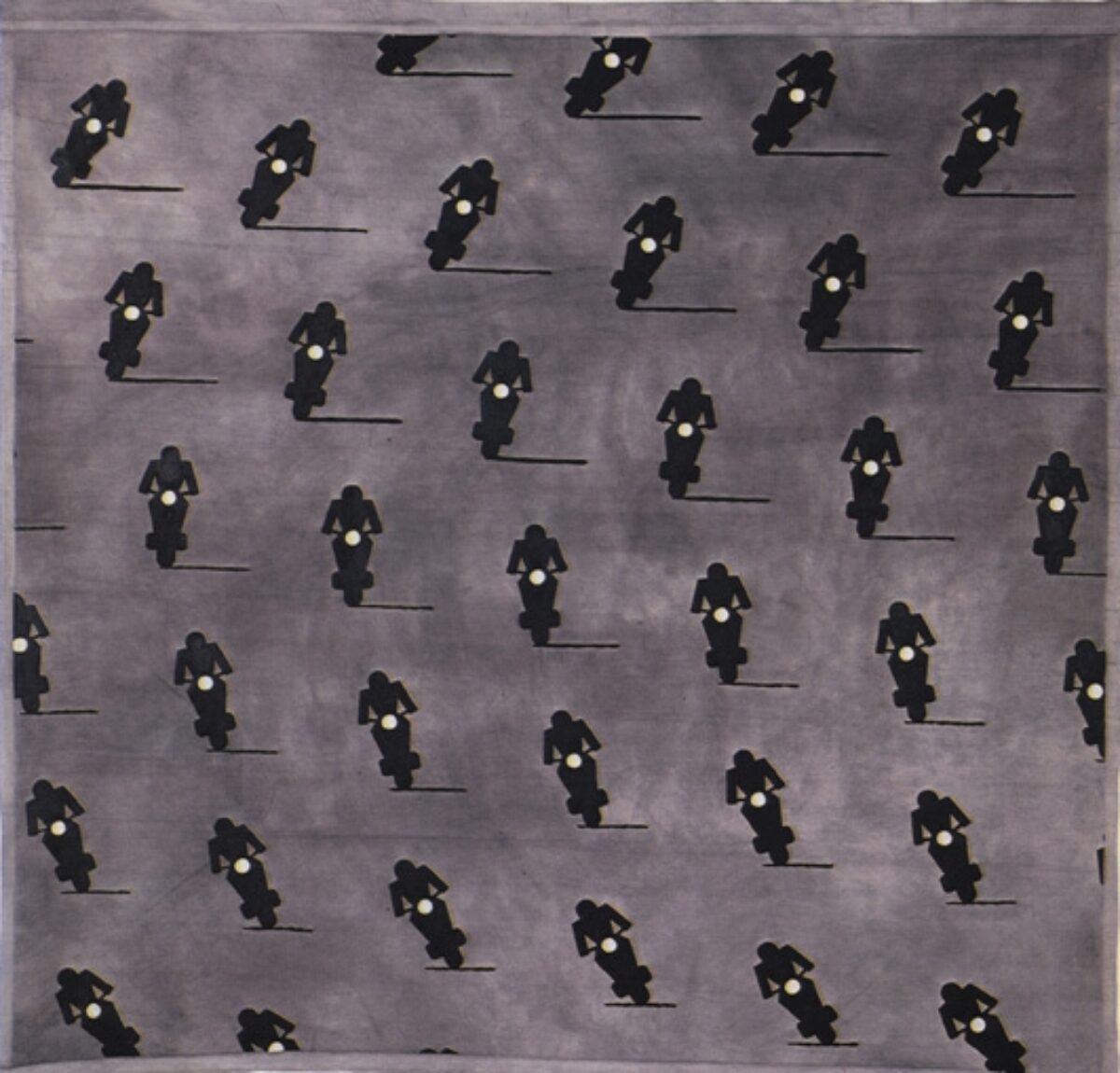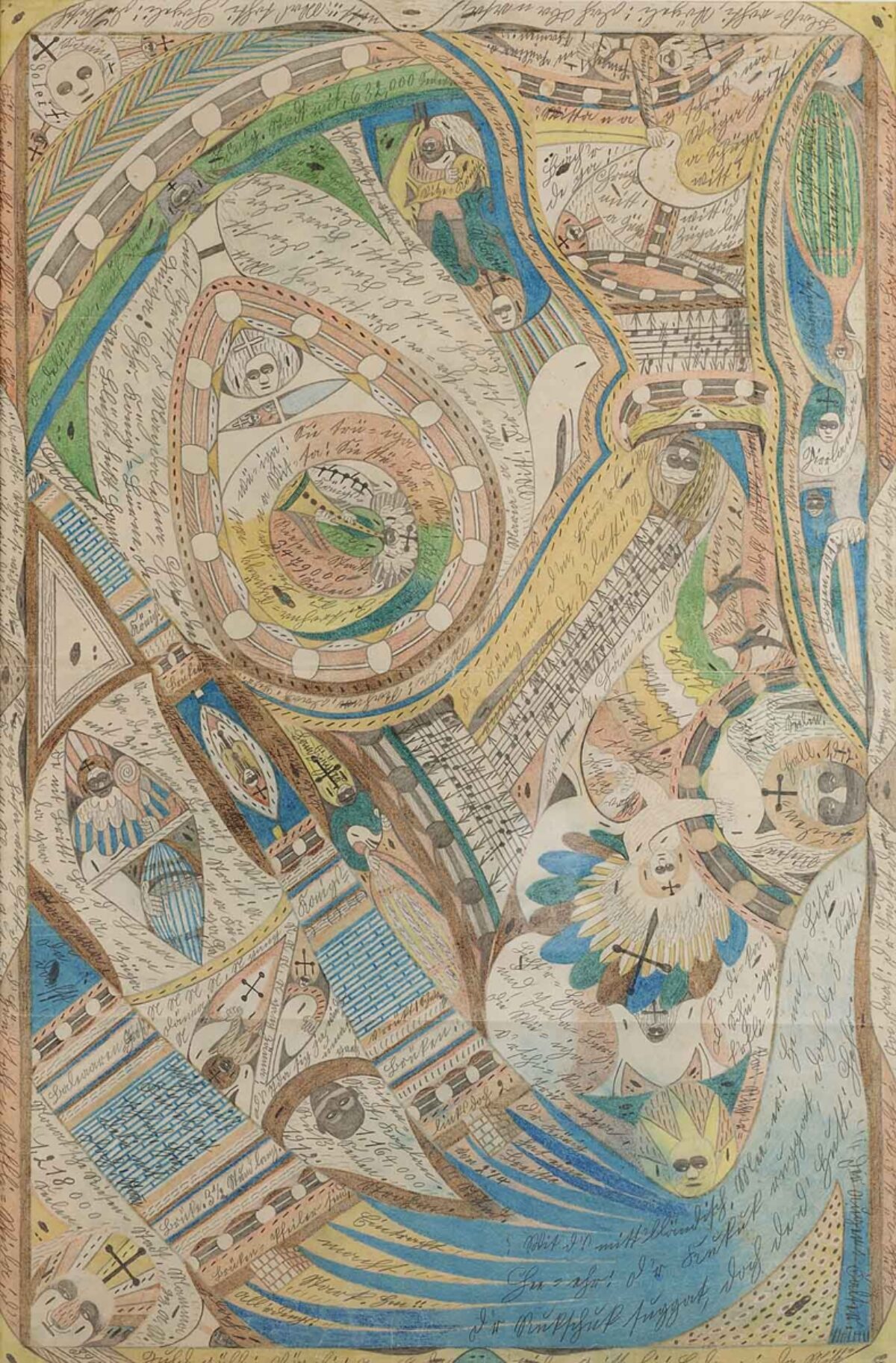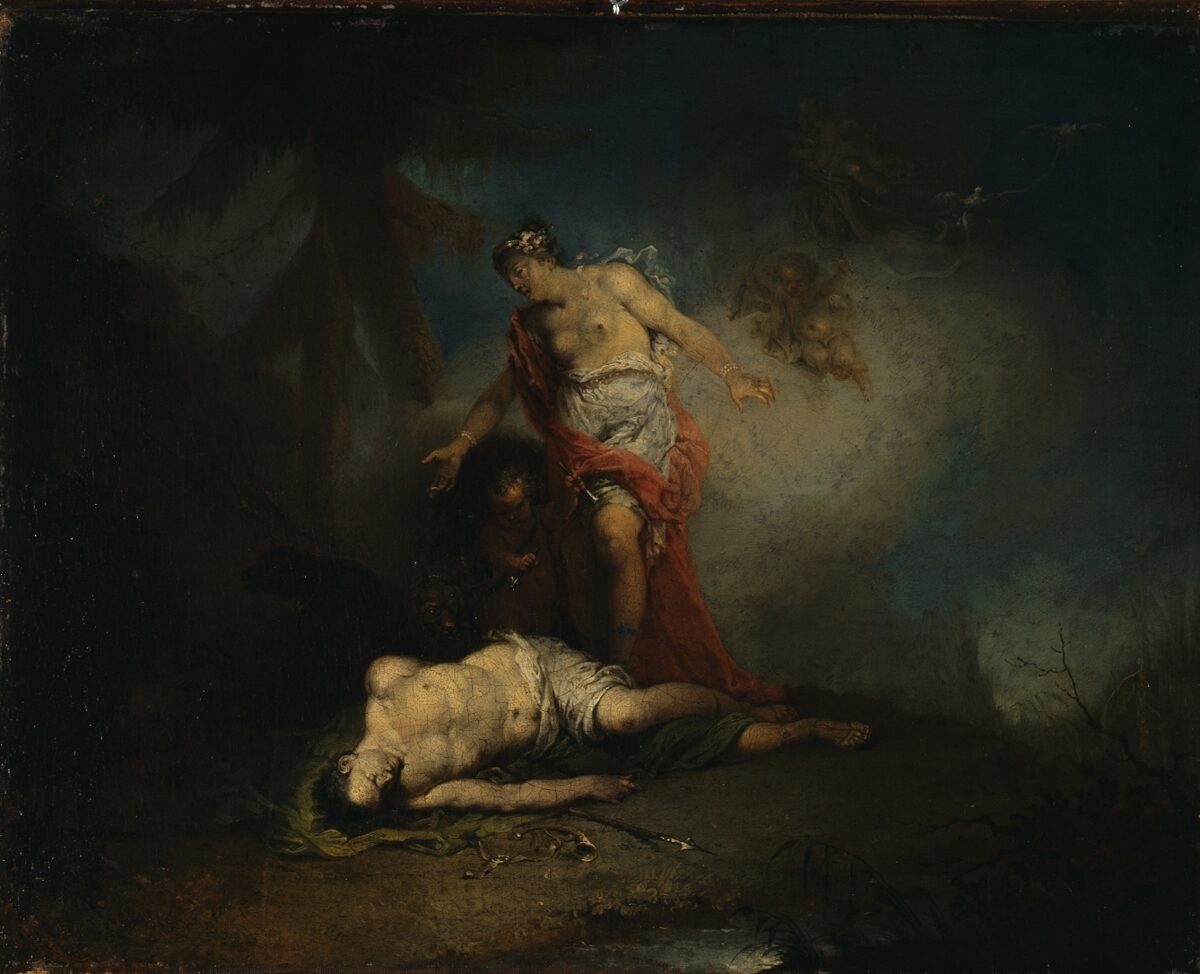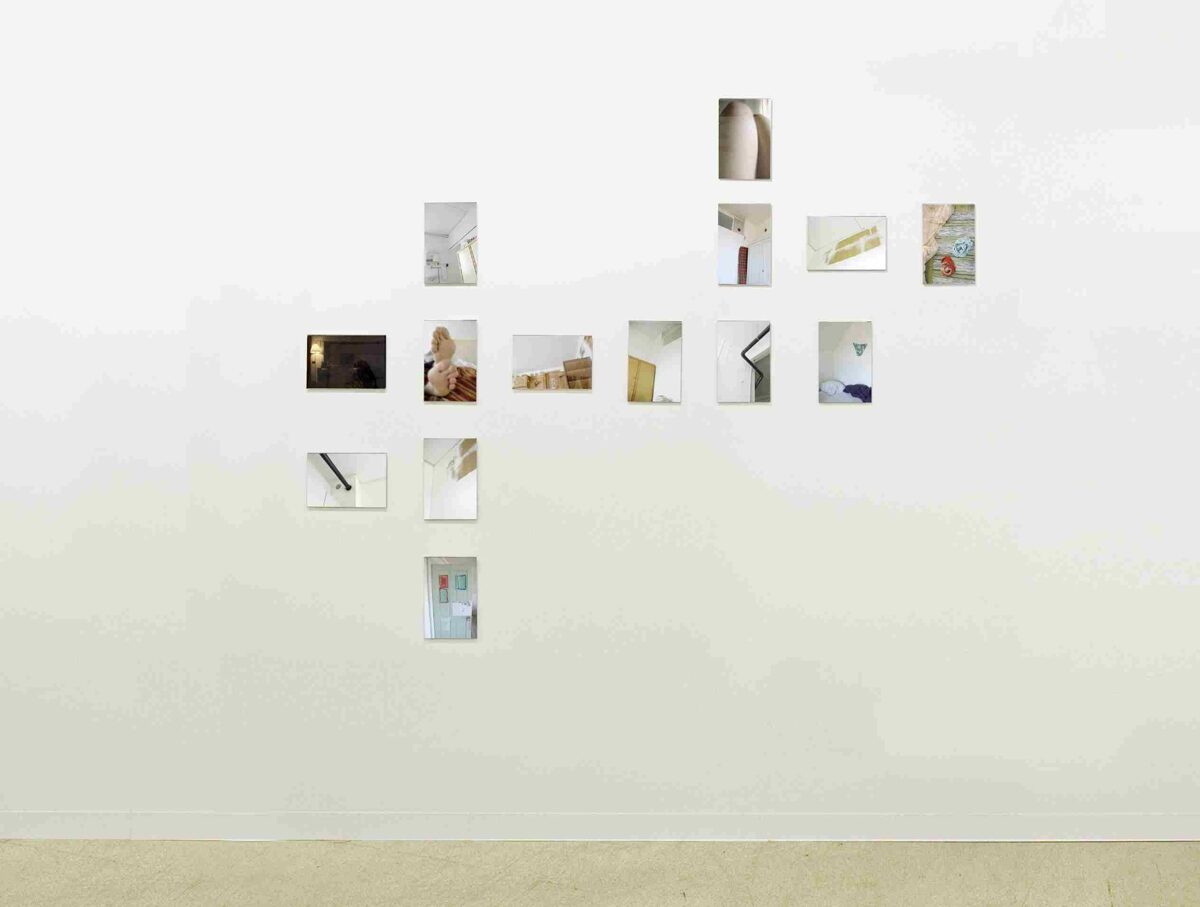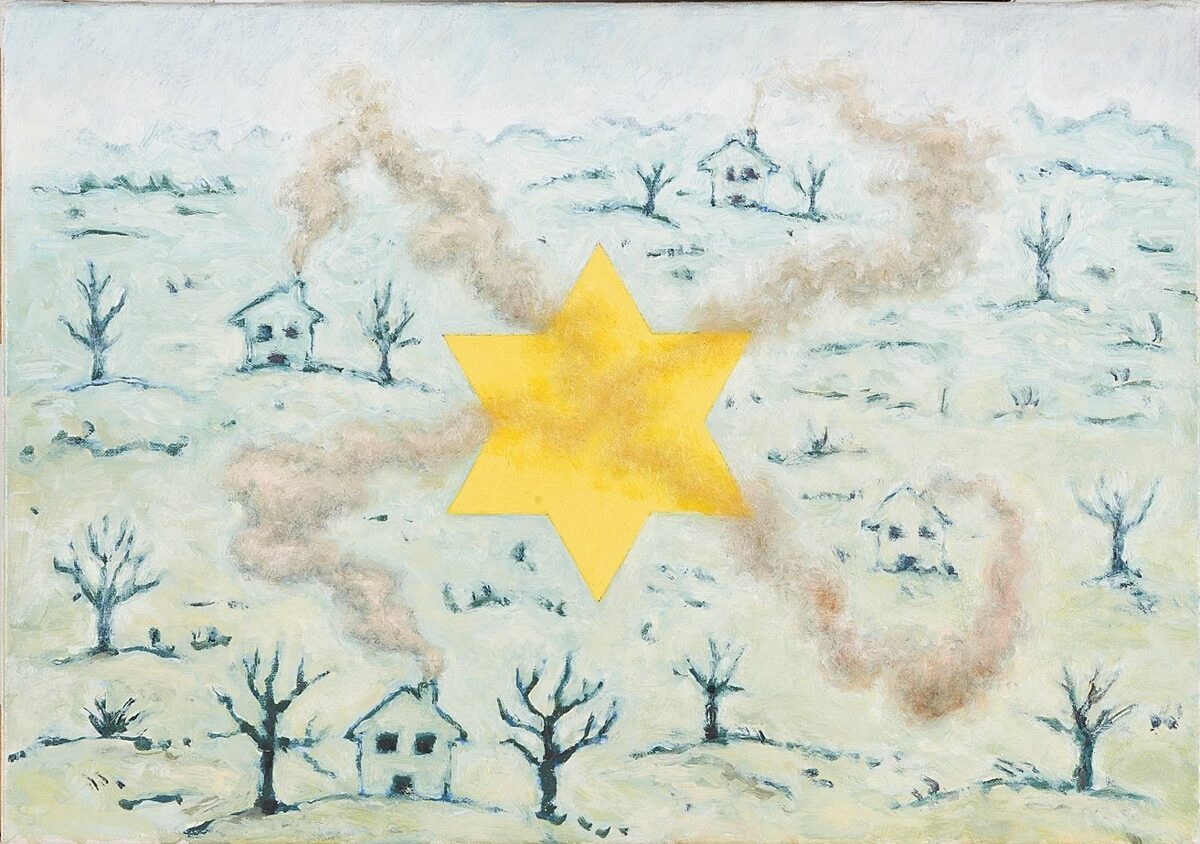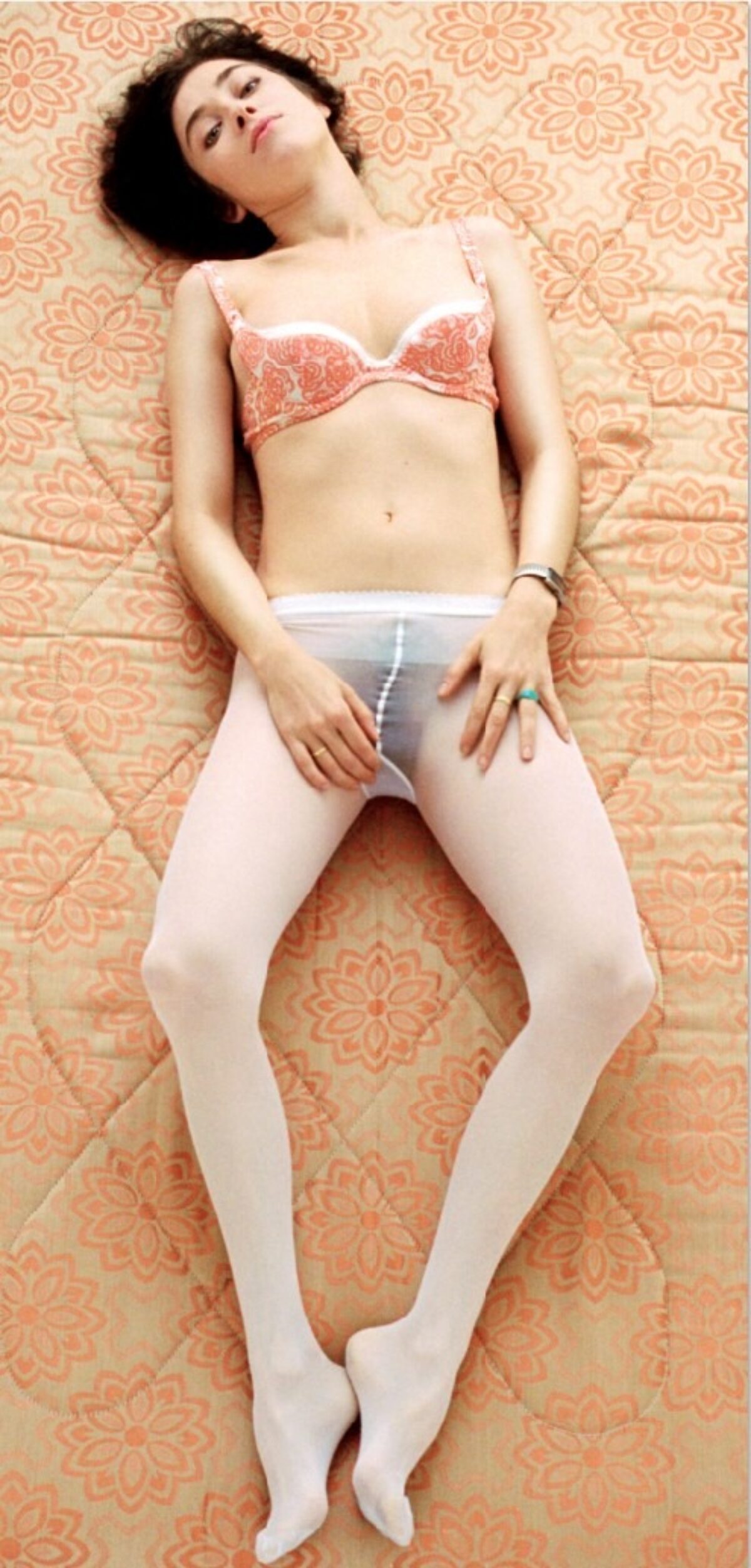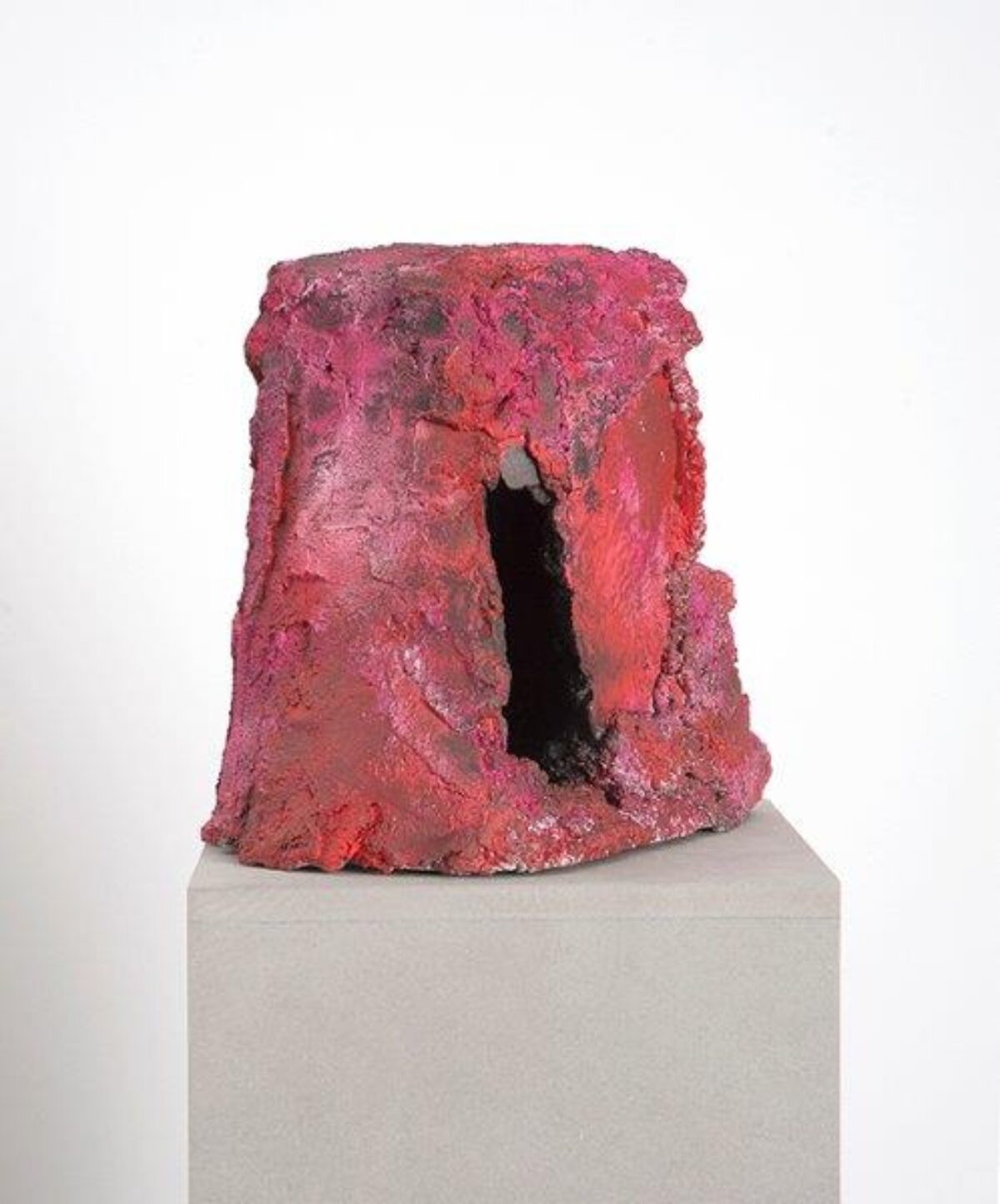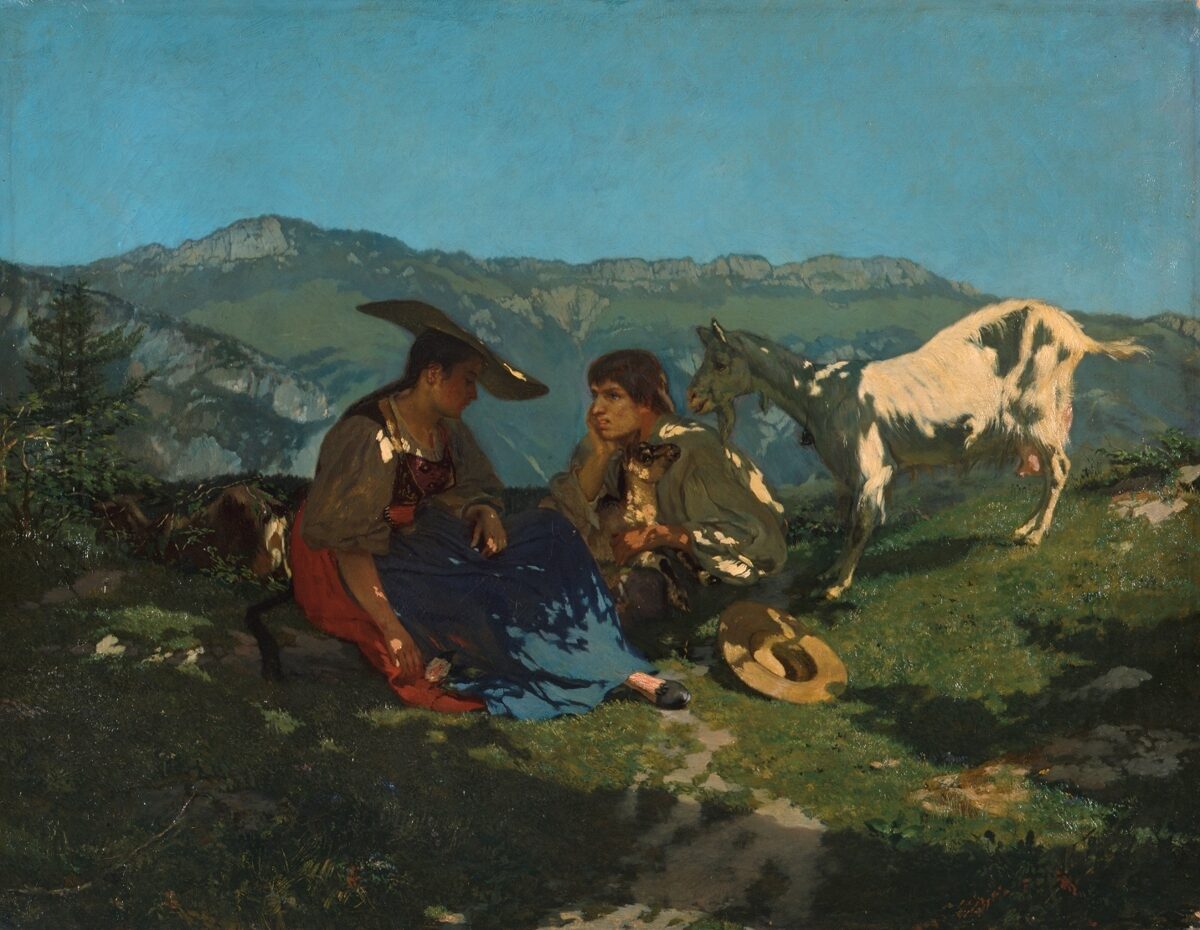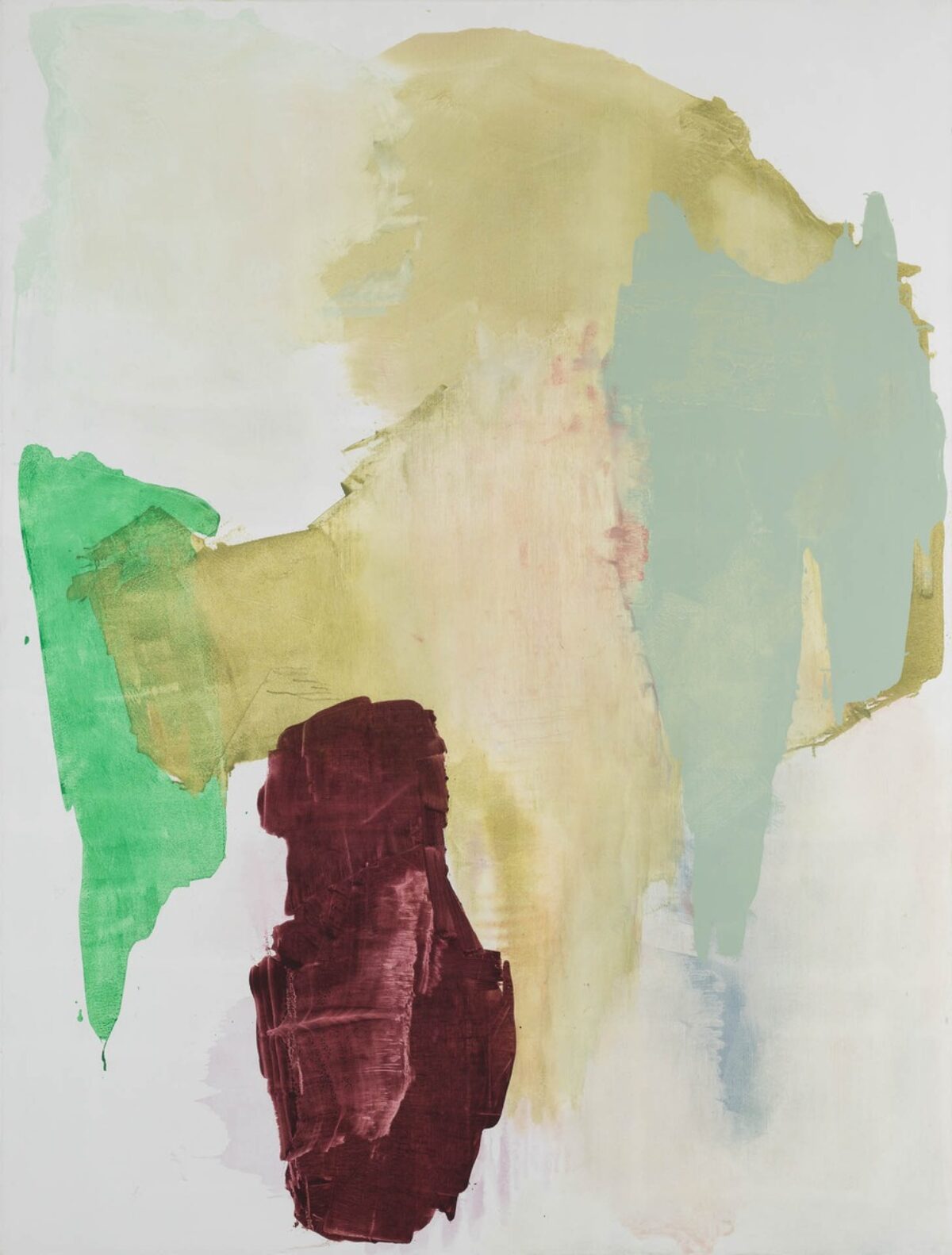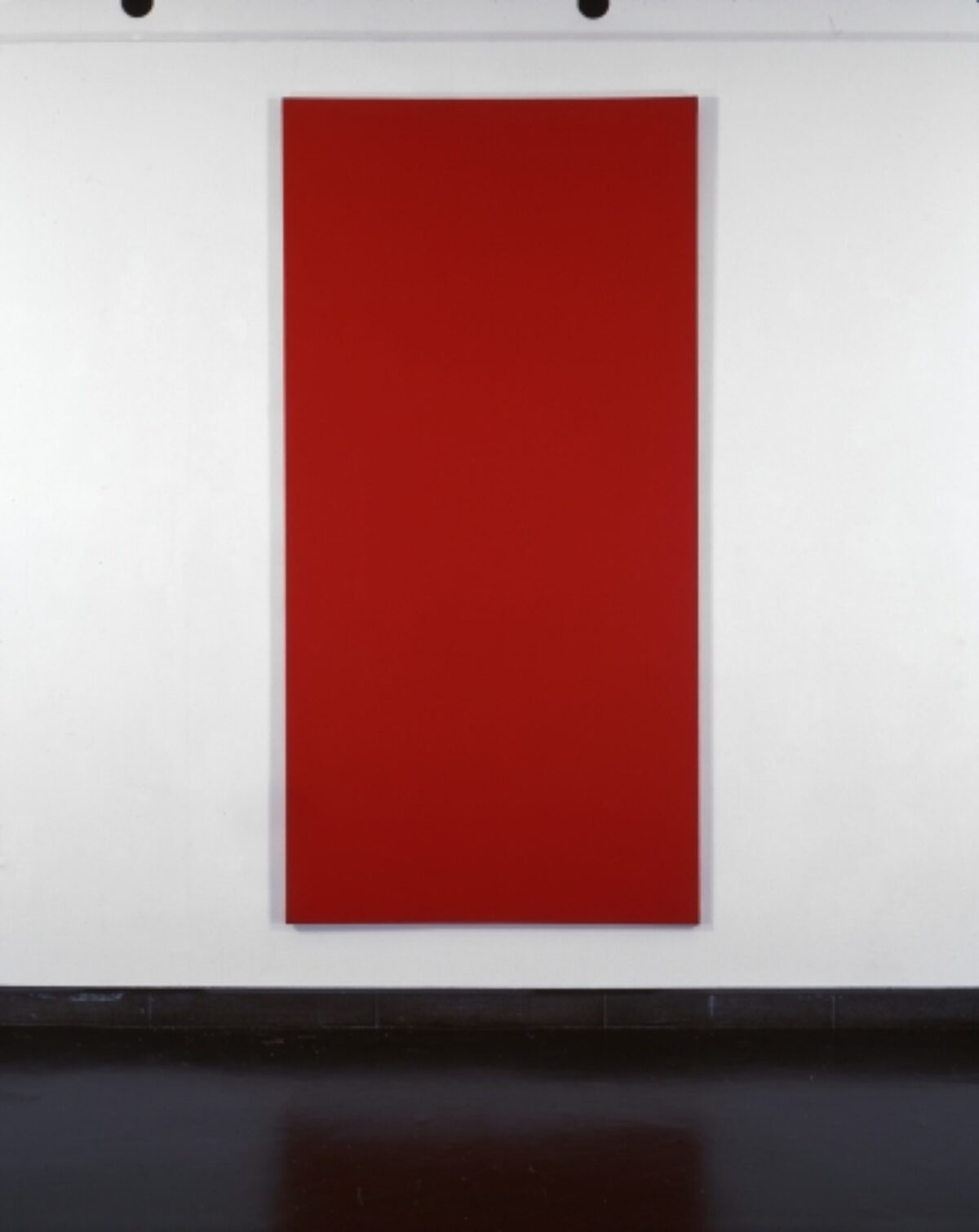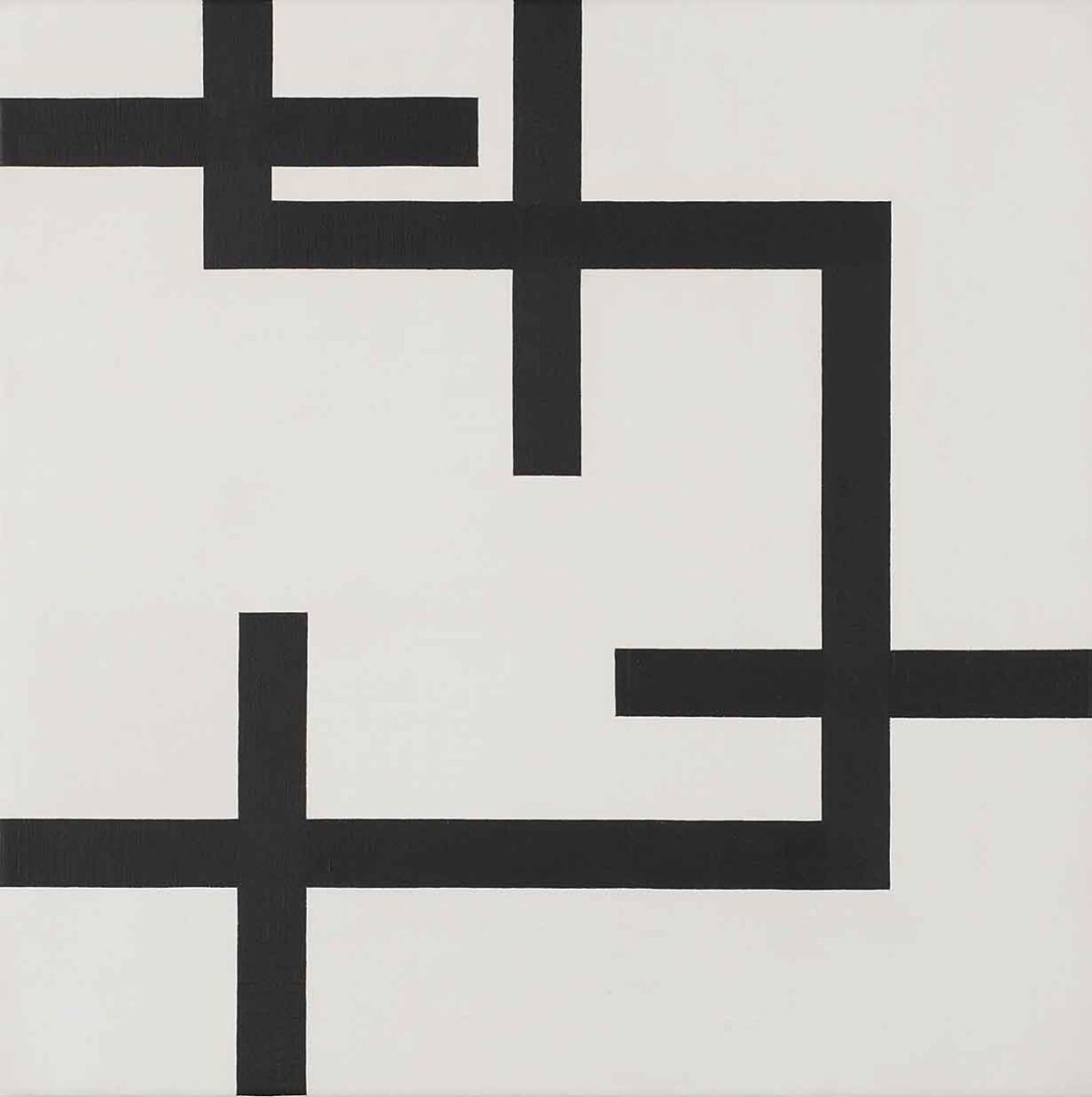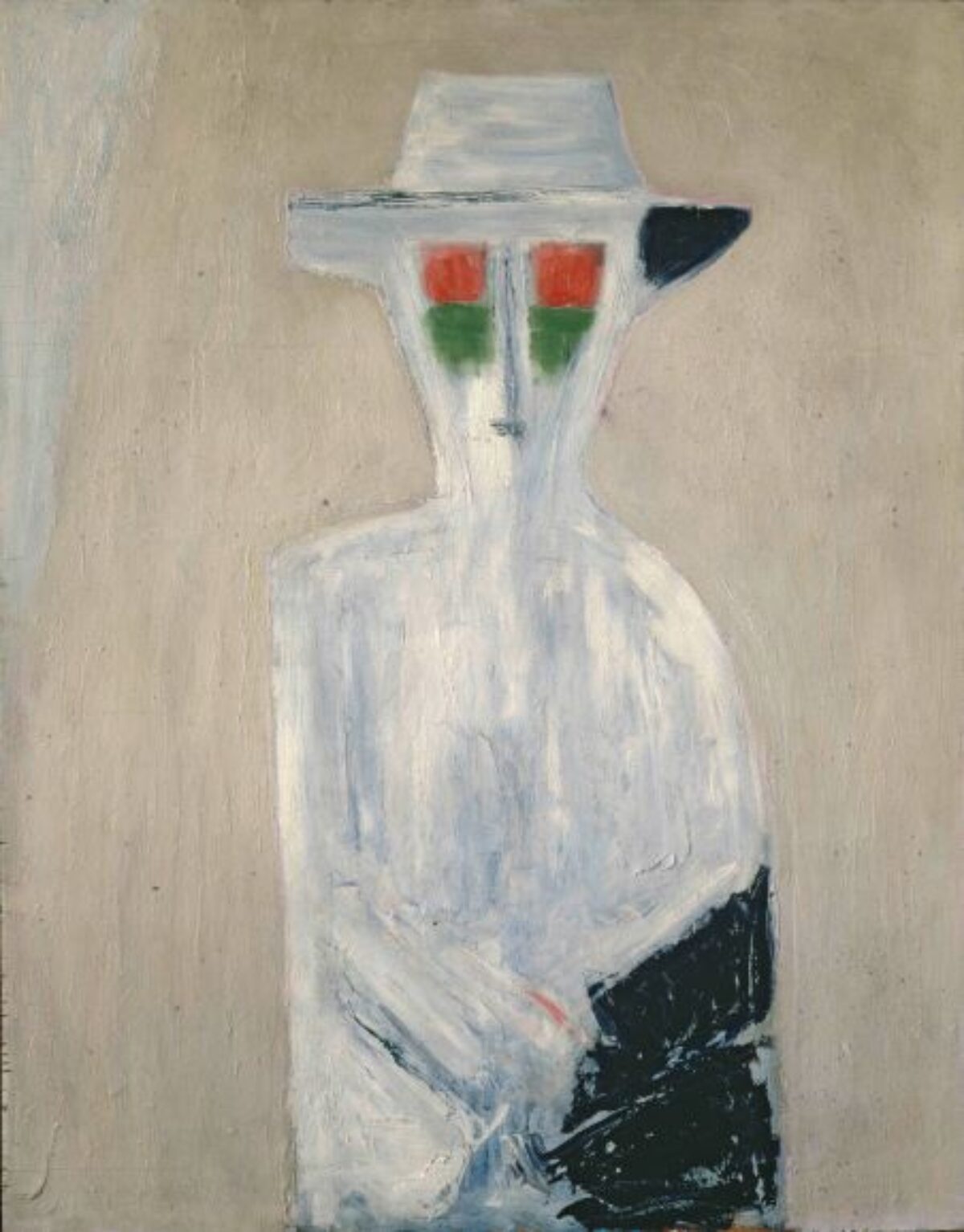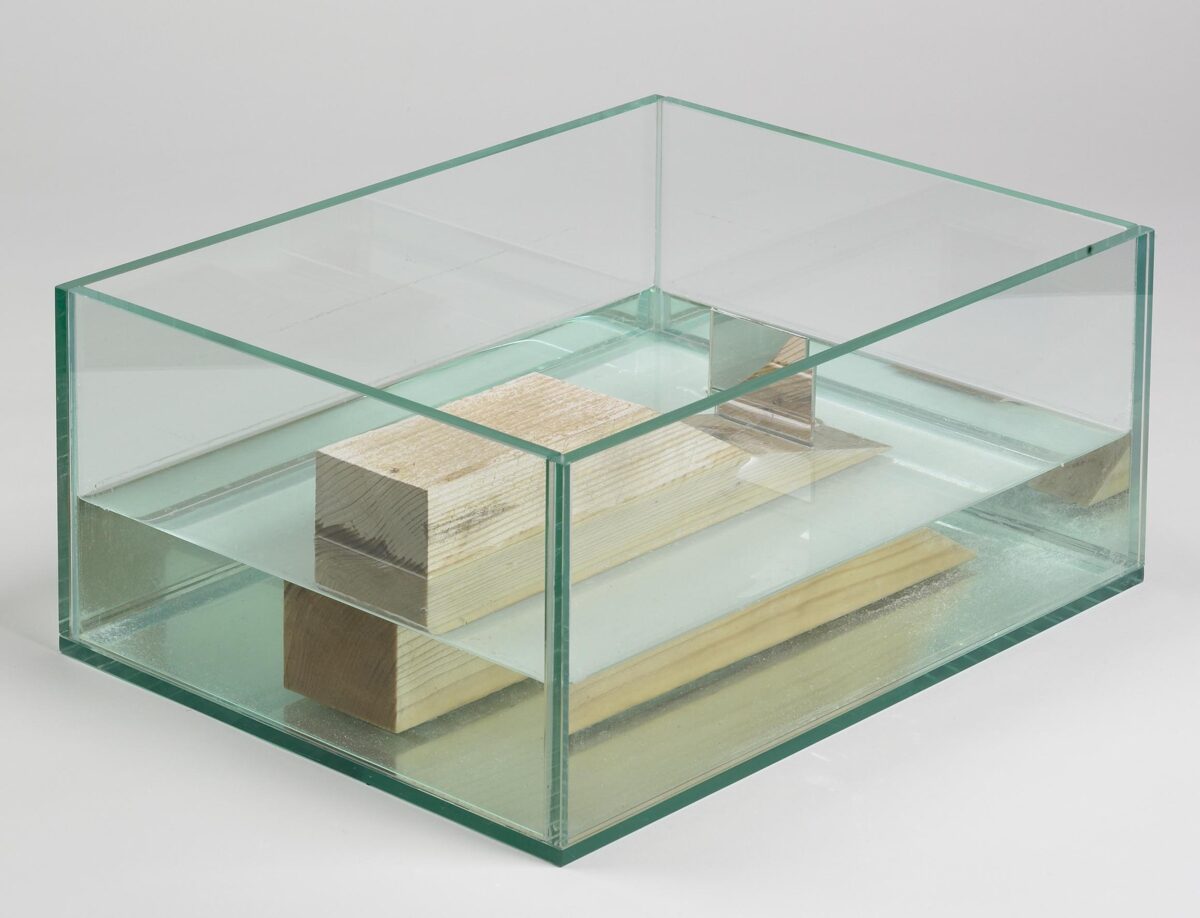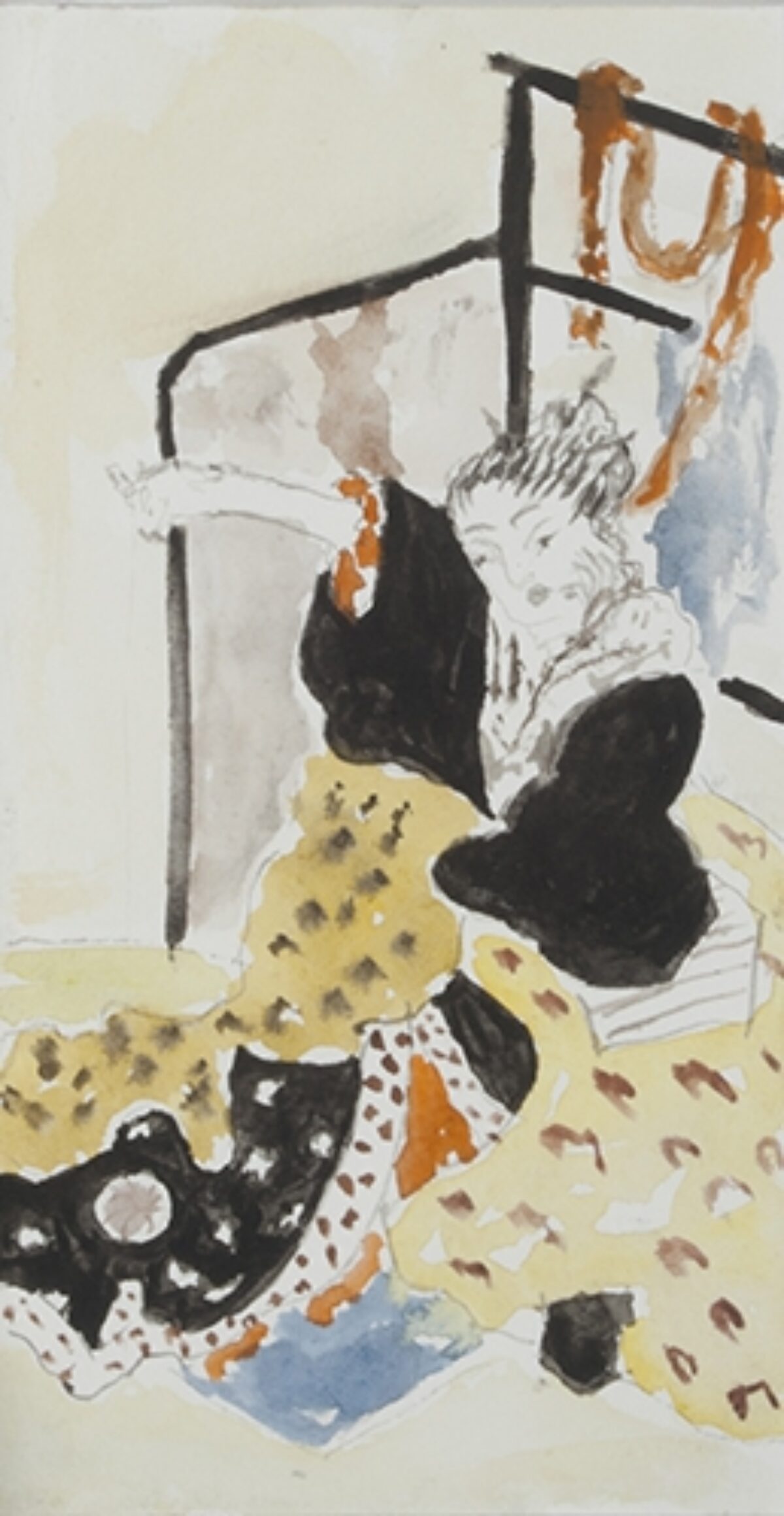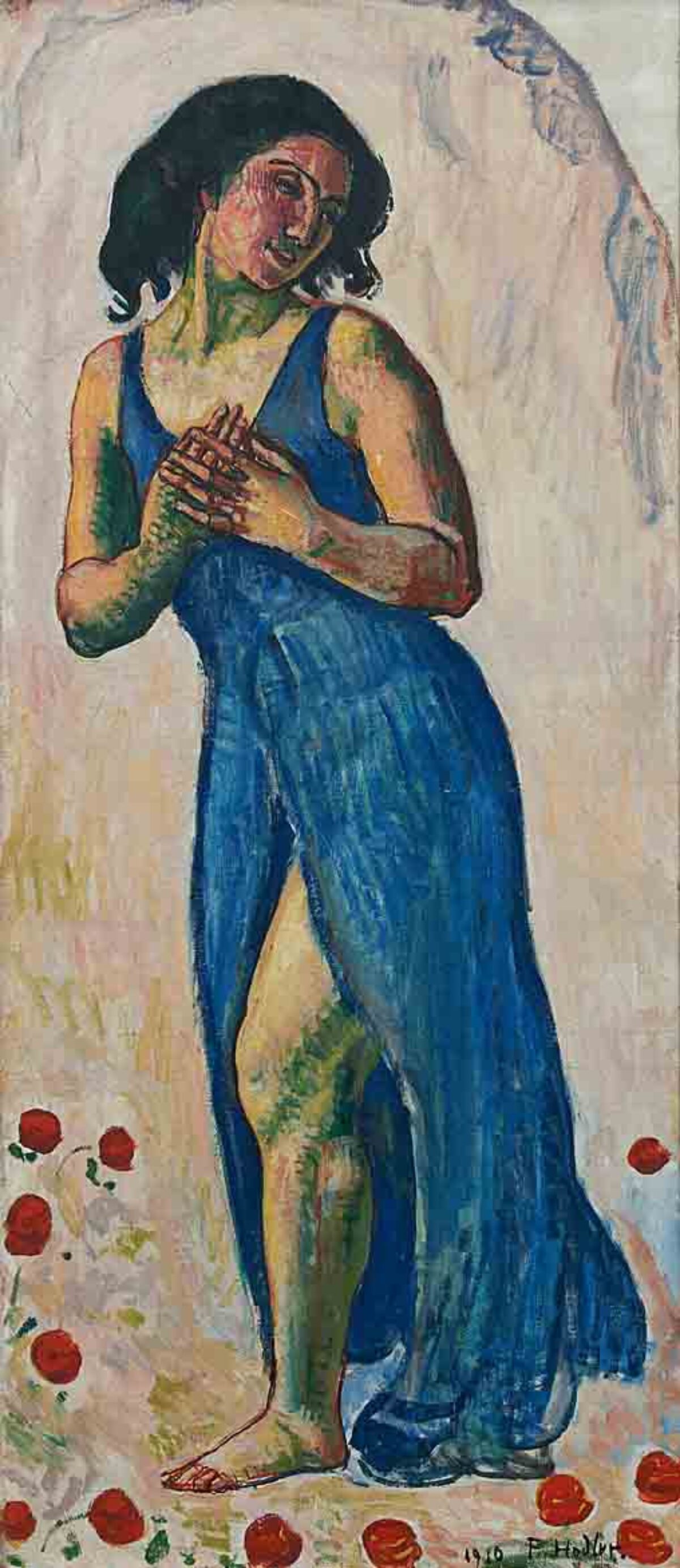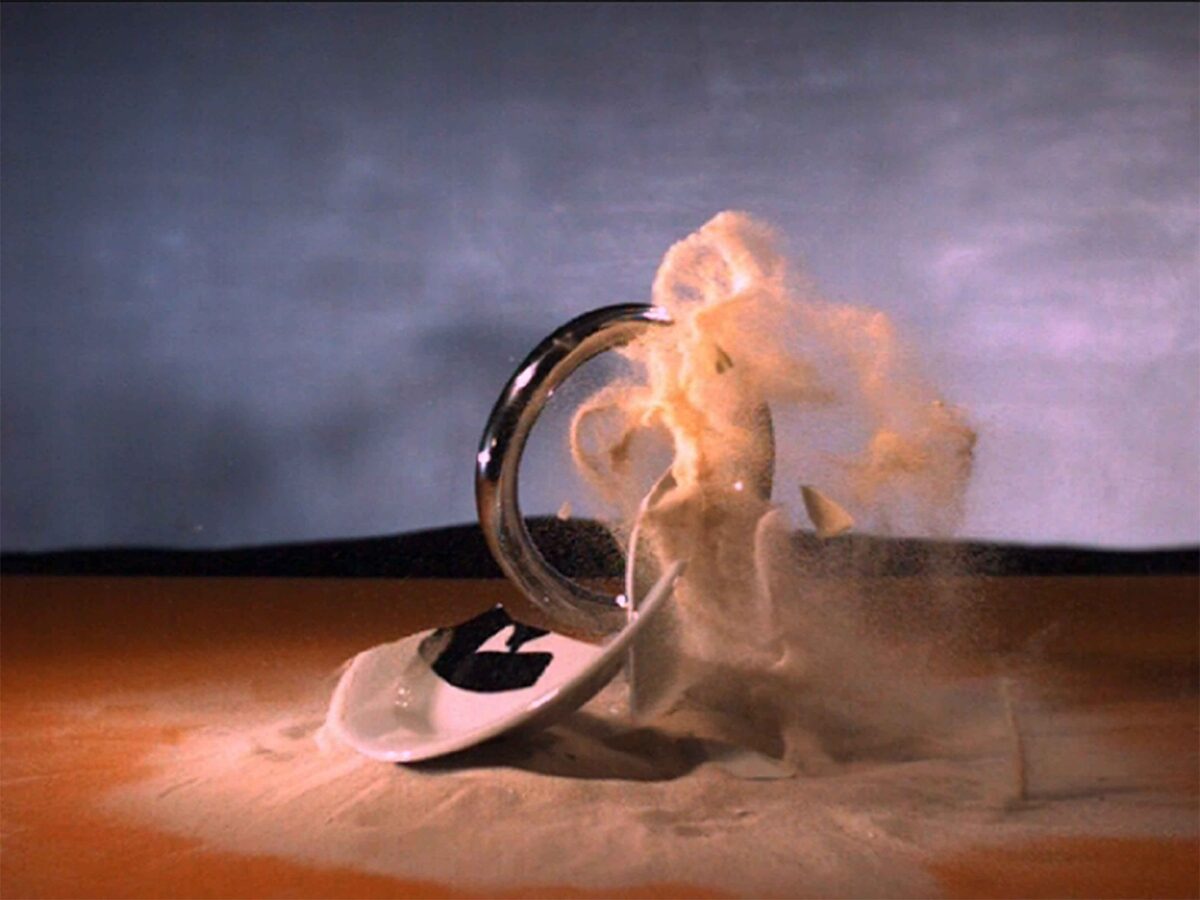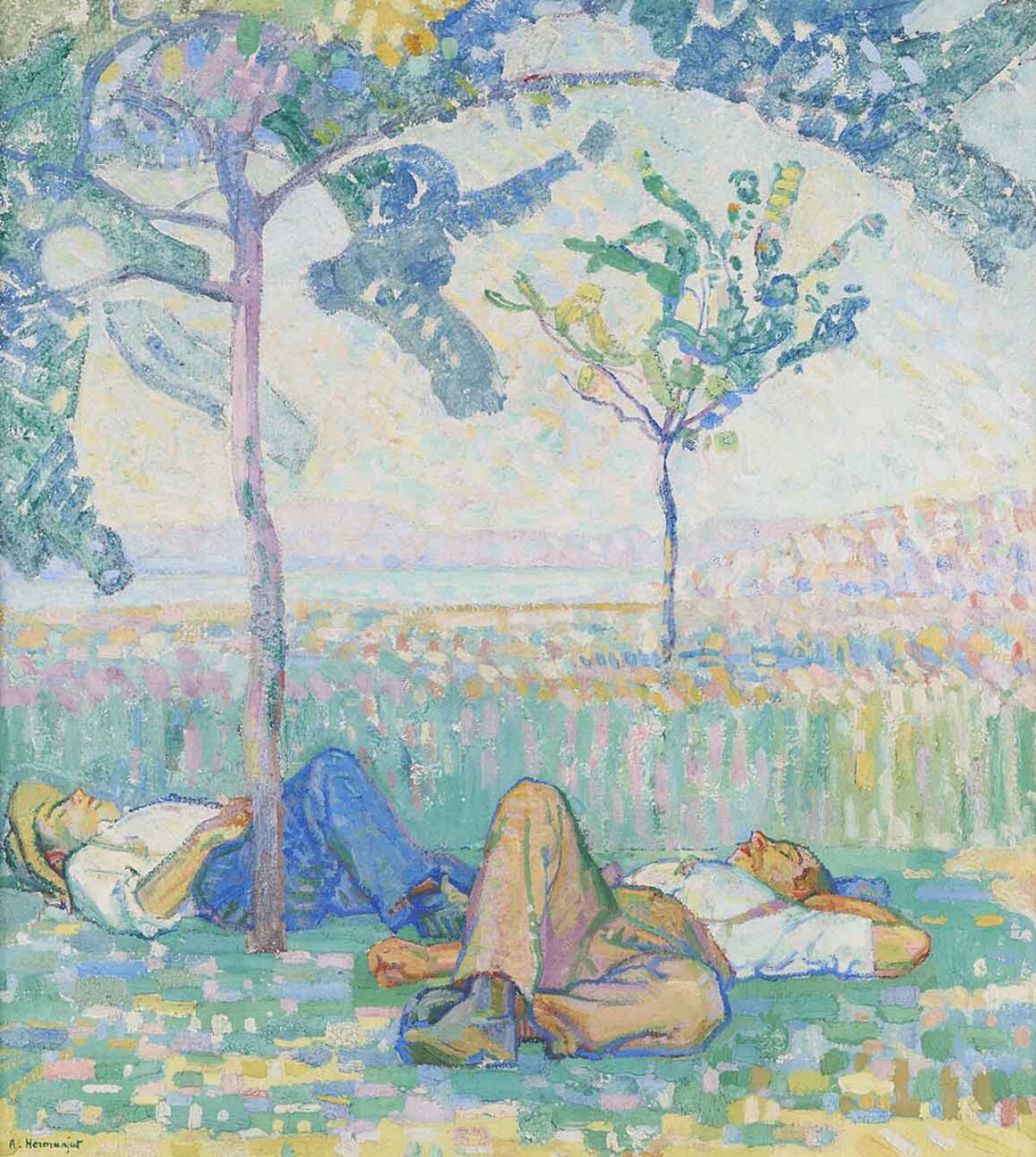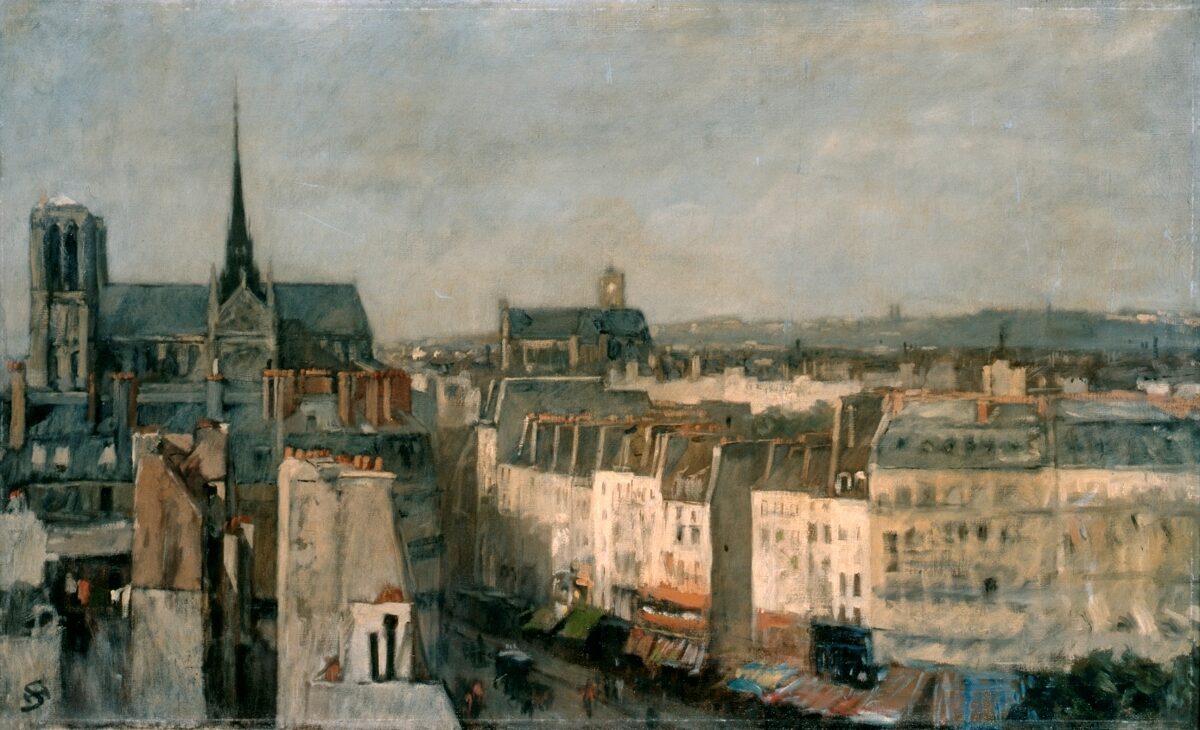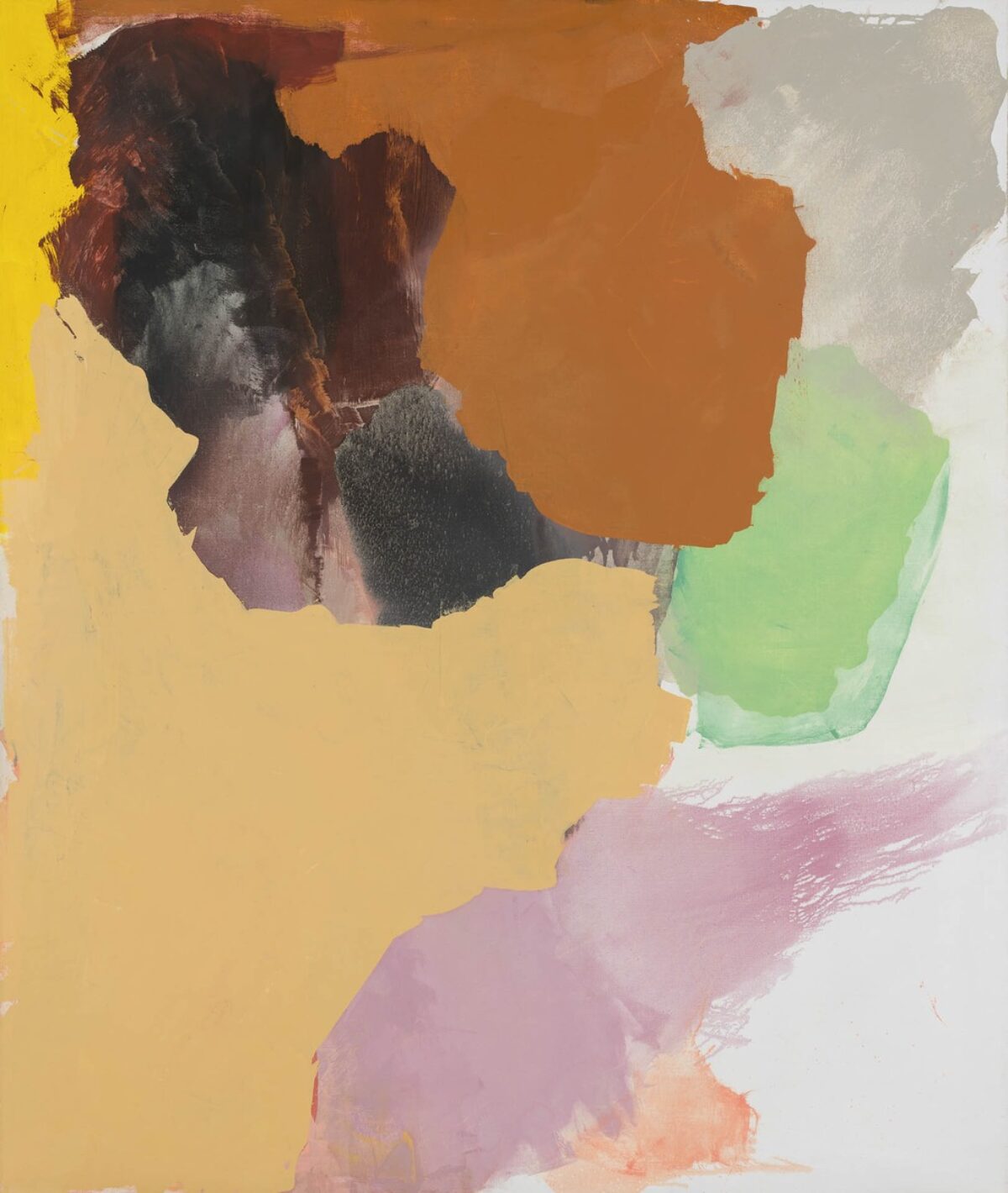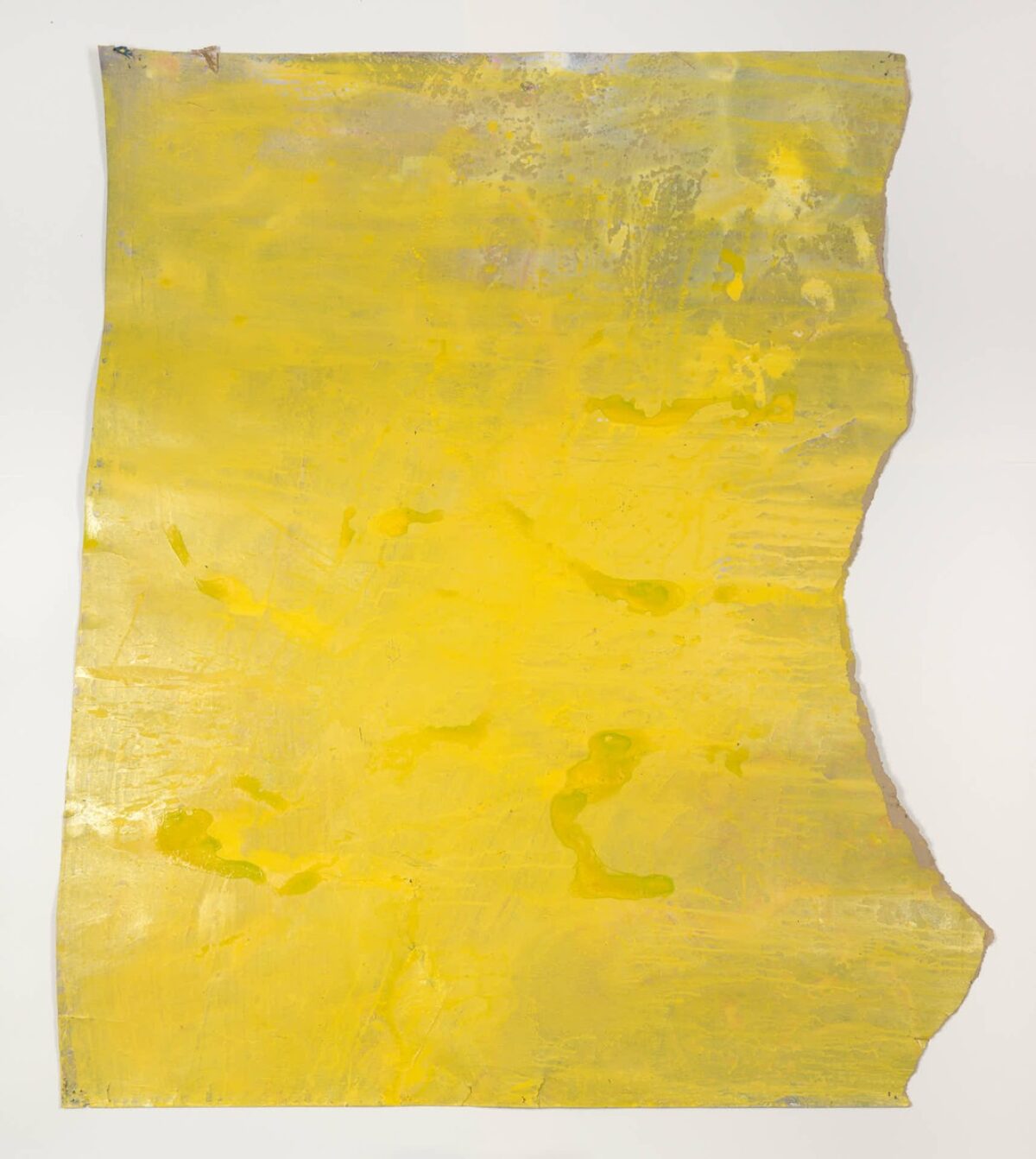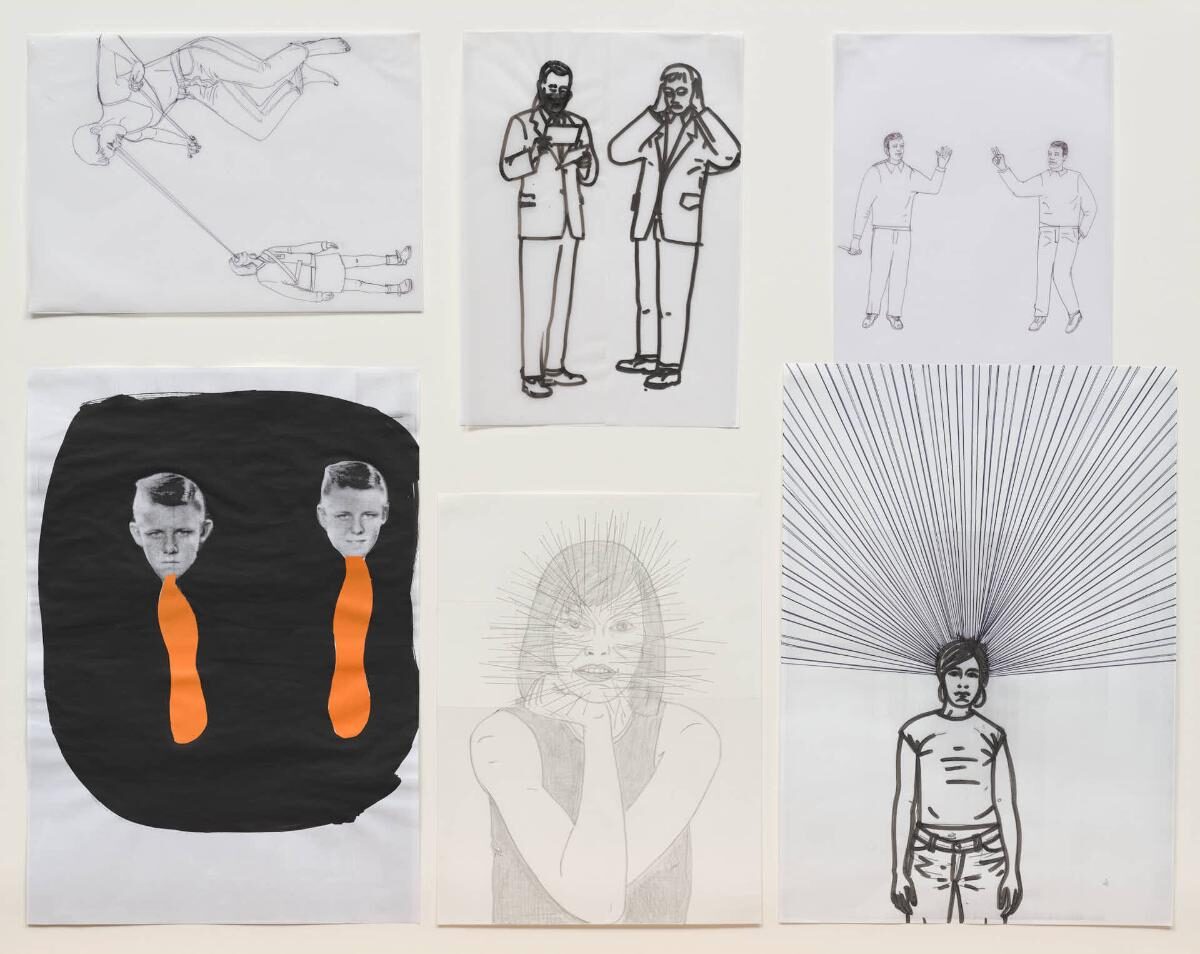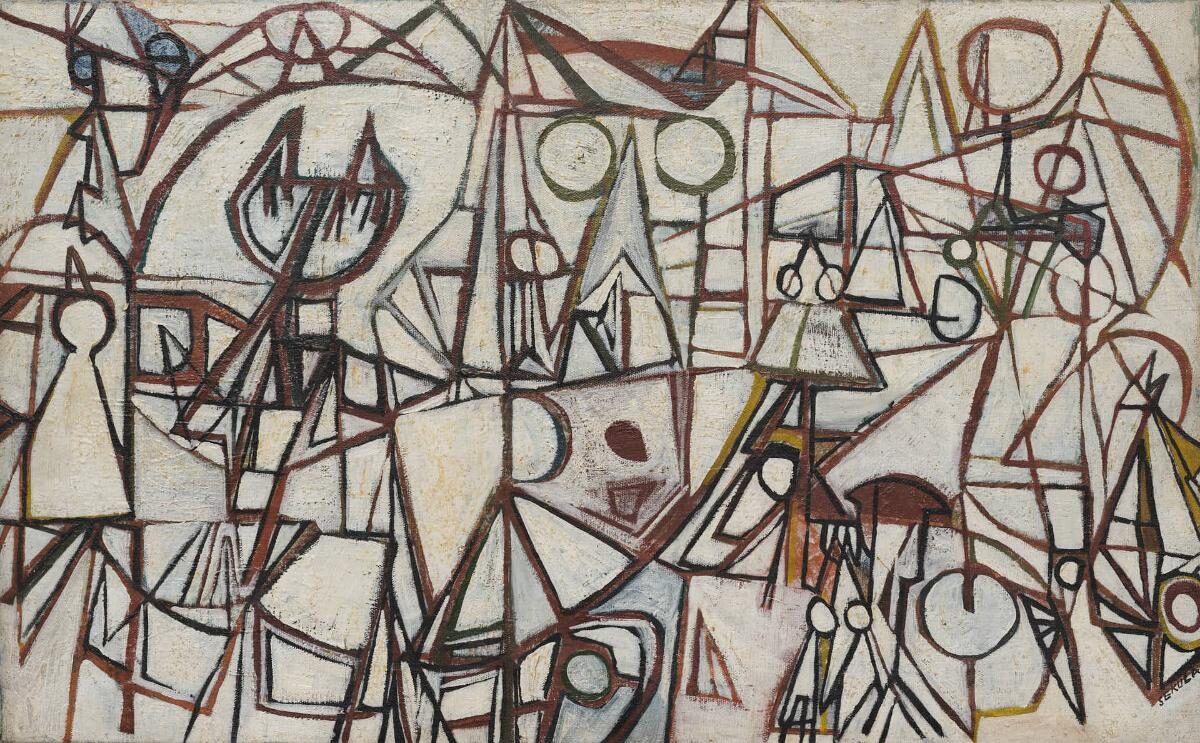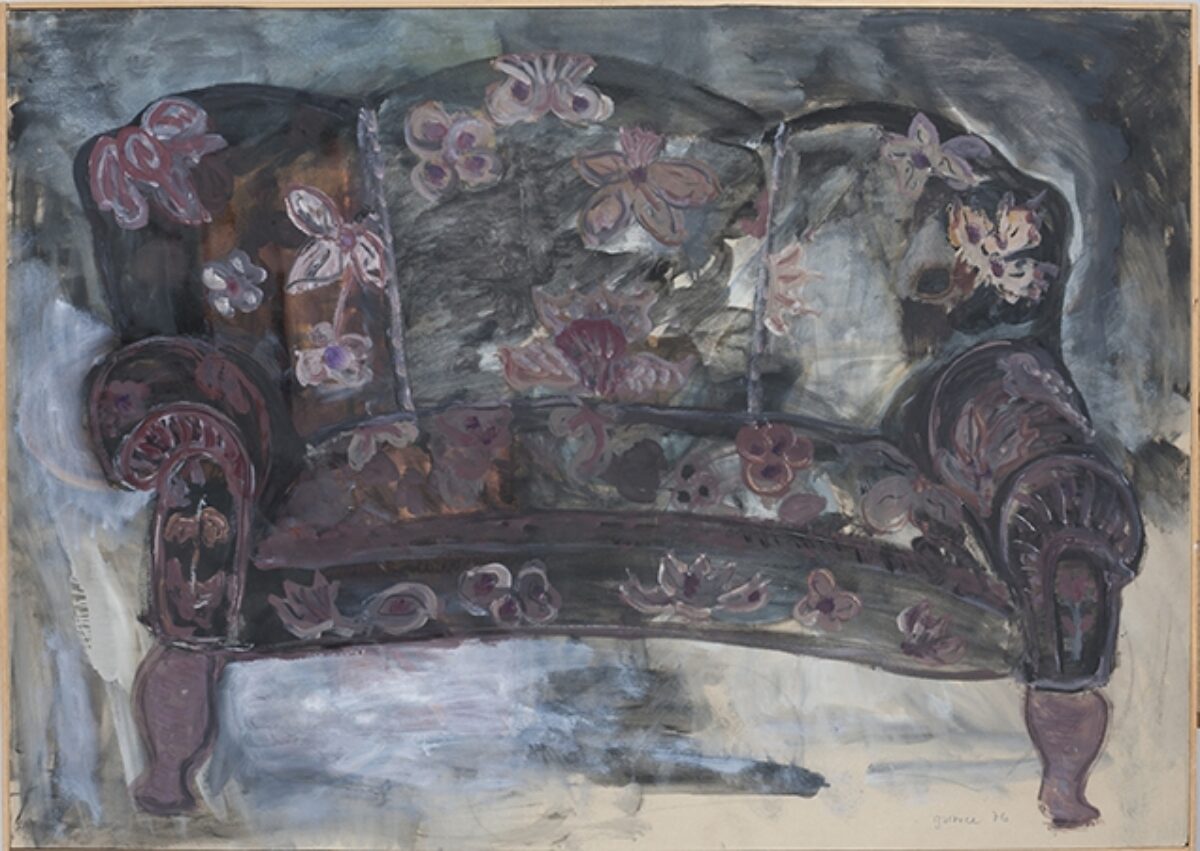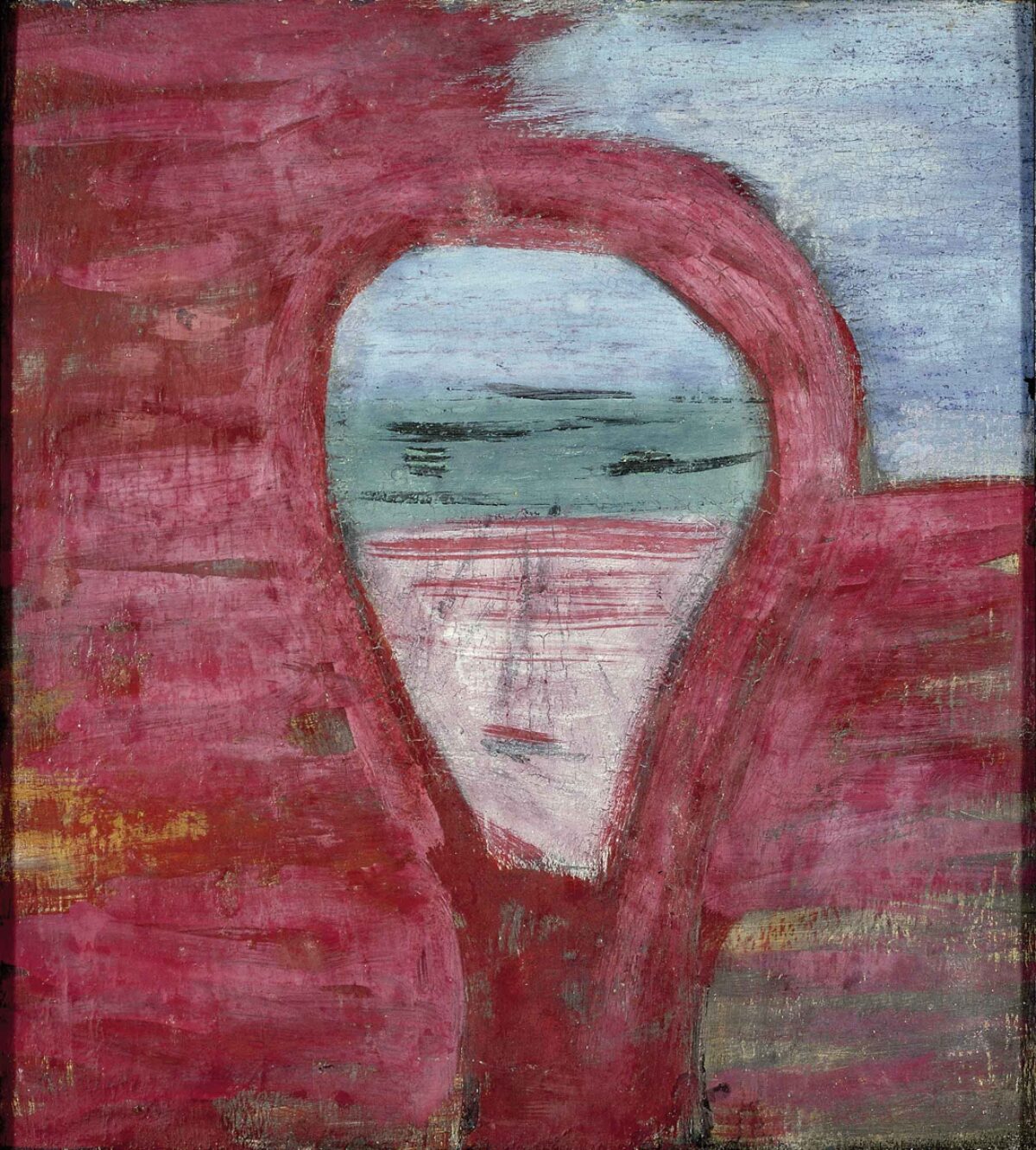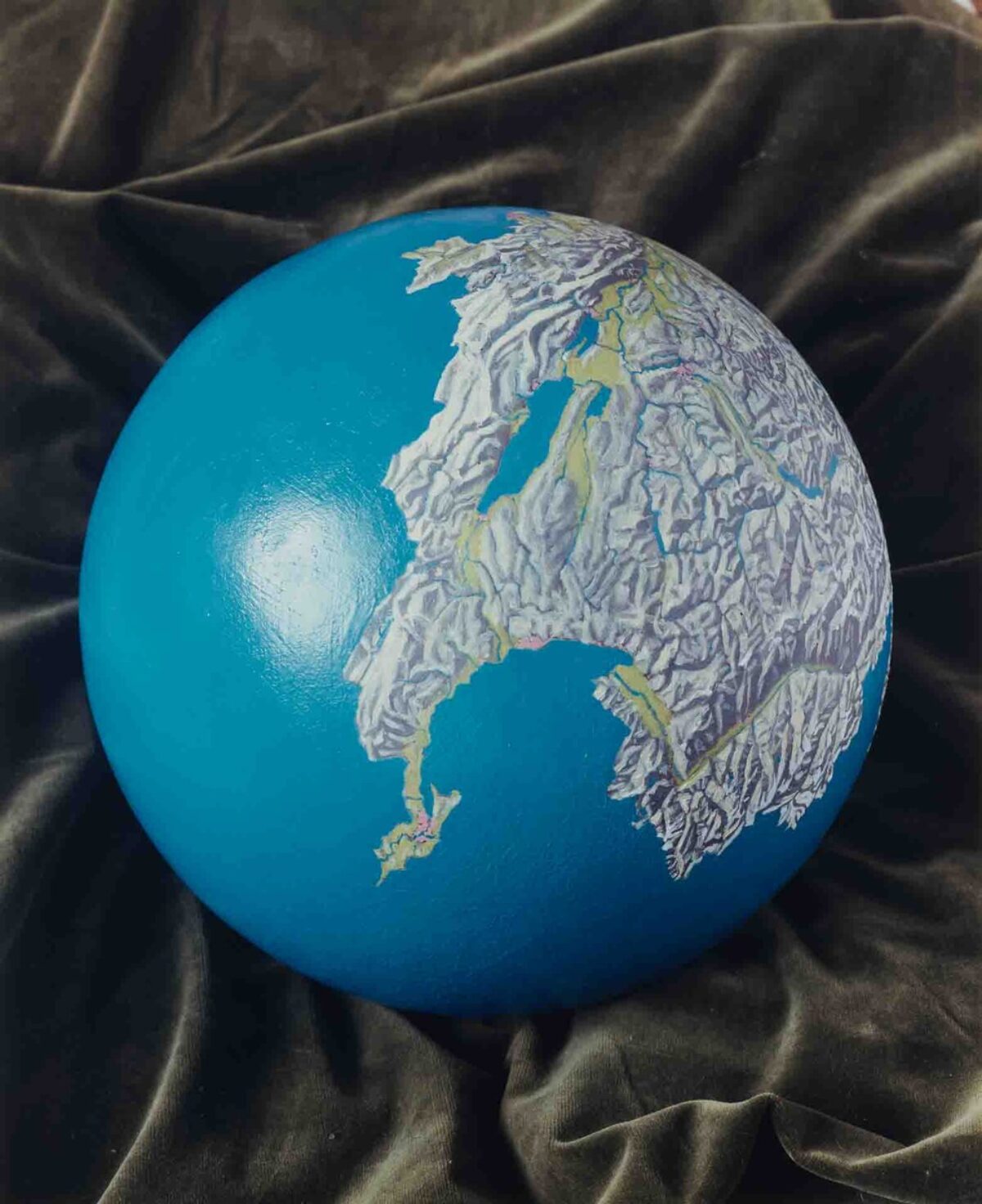
Zinkblech, 83 x 134 x 4.4 cm
English, french and italian version below
Seestücke bilden eine kunstgeschichtliche Gattung der Landschaftsmalerei, die besonders im Impressionismus Auftrieb erfährt – sie finden sich auch im Œuvre von Raetz. 1982 schafft der Künstler ein Relief, „Seestück“, das ein aus bemalten Treibholzstücken zusammengesetztes Kopfprofil wiedergibt. Es muss nach genauen Vorgaben an der Wand befestigt werden. Das Werk entsteht im südfranzösischen Ramatuelle, wo sich der Künstler seit 1967 regelmässig aufhält. Dort malt Raetz 1986 und 1987 auch Seestücke im konventionellen Sinn, indem er stimmungsvolle Eindrücke der Meereslandschaft in Aquarellen festhält. Zusätzlich interessiert ihn die Rolle des Betrachtenden in der Geschichte der Landschaftsmalerei; Fragen nach der Wahrnehmung treiben sein künstlerisches Schaffen seit den Anfängen an.
„Zeemansblik“ kann anlässlich der Ausstellung „99 respektive 59 – Rücksicht auf 40 Jahre Kunst in der Schweiz“ 1999 im Aargauer Kunsthaus für die Sammlung erworben werden. Darin wählt Raetz den frontalen Blick auf die Natur und bedient sich der Tradition der Horizontlinie, die zur Bestimmung einer Landschaft ausreicht. Für die Entwicklung der vorliegenden Arbeit spielen Raetz‘ Landschaften „Im Bereich des Möglichen“ (vgl. Inv.-Nr. 3271, 6429–6439) eine bedeutende Rolle. Nach Experimenten mit unterschiedlichsten Mitteln wie Papier und anderen Materialien, auf denen das Licht seine Energie entfalten kann, wendet sich Raetz einem Stück Zinkblech zu. Zuerst bemalt er es, später poliert er es nur noch. Somit handelt es sich um ein Marinebild ohne Malerei, denn es besteht einzig aus einem gefalzten Blech, auf dem das Licht spielt.
In „Zeemansblik“ agiert Raetz mit der Doppelbedeutung „Blick“ bzw. „Blech“ des niederländischen Wortes „blik“. Der Titel stellt eine raffinierte Demonstration potenzieller Mehrdeutigkeit dar, denn die Arbeit macht deutlich, dass sich unserer Wahrnehmung nicht eine einzige Realität bietet, sondern sich je nach Standort, Zeitpunkt, Bewegung und eigenen Erfahrungen verschiedene Wirklichkeiten offenbaren, und dass unser Sehen immer von besonderen Umständen abhängig ist. Im einfachen, unbemalten Blech mit dem horizontalen Knick erscheinen ganz unterschiedliche See- und Sehbilder, die sich durch Spiegelungen der Umgebung ergeben. Die sich verändernde Wirkung des Raums suggeriert ein ständig sich wandelndes Meer mit Horizont und hebt die greifbare Wirklichkeit in imaginative Räume auf.
Karoliina Elmer, vor 2018
***
Seascapes are a genre of landscape painting that was particularly popular in Impressionism. They can be found in the work of Markus Raetz as well: in 1982 the artist created “Seascape”, a relief showing the profile of a head composed of pieces of painted driftwood. The work must be attached to the wall according to exact specifications. He created it in Ramatuelle in the south of France where he had been spending time on a regular basis since 1967. There, Raetz also created traditional marine paintings in 1986 and 1987 by capturing atmospheric impressions of the seascape in watercolours. At the same time, he was interested in the role of the viewer in the history of landscape painting. Issues of perception have fuelled his artistic work since its beginnings.
“Zeemansblik” was included in “99 respektive 59”, the 1999 anniversary exhibition at the Aargauer Kunsthaus which looked back on forty years of Swiss art, and could subsequently be acquired for the collection. In this work Raetz opted for the frontal view of nature and drew on the tradition of the horizon line, which suffices to identify a landscape. Important in its development were Raetz’s series of landscapes entiteld “Within the realm of the possible” (“Im Bereich des Möglichen”, see inv. 3271, 6429–6439). After experimenting with a variety of media like paper and other materials which allow light to develop its energy, he turned to a piece of zinc sheet. At first, he painted it, but then merely polished it. In other words, the work is a marine painting without painting, as it consists of nothing but a folded piece of sheet metal with light playing on its surface.
In “Zeemansblik” Raetz plays with the dual meaning of the Dutch word “blik”, which means both “view” and “tin” or “sheet metal”. The title is a subtle demonstration of potential ambiguity, as the work makes clear that, rather than a single reality, different realities present themselves to our perception depending on location, time, movement and our own experiences, and what we see always depends on particular circumstances. Reflections of the surroundings cause very different images of the sea and seeing to appear in the simple, unpainted sheet metal with horizontal fold line. The changing effects of the environment suggest a constantly changing sea with horizon and dissolves tangible reality into imaginative spaces.
Karoliina Elmer, before 2018
***
Les marines forment un genre artistique au sein de la peinture de paysage, qui connaît un essor certain durant la période impressionniste – on les trouve également dans l’œuvre de Raetz. En 1982, l’artiste réalise un relief, «Seestück», représentant une tête de profil constituée de morceaux de bois flotté peints et devant être accroché au mur selon des instructions précises. Cette œuvre est réalisée à Ramatuelle dans le Sud de la France, où l’artiste séjourne régulièrement depuis 1967. En 1986 et 1987, Raetz y peint aussi des marines au sens conventionnel, en immortalisant les impressions pittoresques du paysage maritime dans des aquarelles. Par ailleurs le rôle du spectateur dans l’histoire de la peinture de paysage l’intéresse; les questions de perception stimule sa création artistique depuis ses débuts.
«Zeemansblik» est acquis pour les collections du musée à l’occasion de l’exposition «99 respektive 59 – Rétrospective de 40 ans d’art en Suisse», qui s’est tenue en 1999 à l’Aargauer Kunsthaus. Pour cette œuvre, Raetz choisit le regard frontal sur la nature et recourt à la tradition de la ligne horizontale qui suffit à déterminer un paysage. Les paysages de Raetz «Im Bereich des Möglichen» (cf. n° d’inventaire 3271, 6429–6439) jouent un rôle important dans l’élaboration du présent travail. Après avoir expérimenté avec les moyens les plus divers comme le papier et d’autres matériaux sur lesquels la lumière peut déployer son énergie, Raetz se tourne vers un morceau de tôle de zinc. Tout d’abord il le peint, plus tard il se contentera de le polir. Il s’agit ainsi d’une marine sans peinture, car elle se compose uniquement d’une tôle pliée sur laquelle la lumière opère.
Dans «Zeemansblik», Raetz joue sur le double sens du mot néerlandais «blik», signifiant aussi bien «regard» que «tôle». Le titre représente une démonstration ingénieuse d’une plurivocité potentielle, car l’ouvrage met clairement en lumière que notre perception n’offre pas une seule et unique réalité, mais qu’en fonction de l’emplacement, du moment, du mouvement et de nos propres expériences, différentes réalités se manifestent, et que ce que nous voyons dépend toujours de circonstances particulières. Sur la simple tôle non peinte avec une pliure horizontale apparaissent des images visuelles et de la mer très différentes, générées par les reflets de l’environnement. Le changement constant de l’incidence de la pièce suggère une mer et son horizon en perpétuel mouvement et relègue la réalité tangible dans des espaces imaginaires.
Karoliina Elmer, avant 2018
***
Le vedute marine sono un genere storico-artistico della pittura di paesaggio che ha conosciuto un periodo particolarmente fiorente durante l’impressionismo. Anche il lavoro di Markus Raetz (1941-2020) annovera il tema della marina. Nel 1982 l’artista crea un rilievo intitolato Seestück (Marina), costituito da legnetti dipinti che nell’insieme compongono il profilo di una testa. L’allestimento a parete è vincolato a precise indicazioni dell’artista. L’opera nasce a Ramatuelle, nella Francia meridionale, dove Raetz soggiorna regolarmente dal 1967 e dove negli anni 1986 e 1987 dipinge marine nell’accezione convenzionale del termine, ovvero atmosferici acquerelli del paesaggio marino. Raetz si interessa inoltre al ruolo dello spettatore nella storia della pittura paesaggistica, in linea con le indagini sulla percezione che animano la sua ricerca fin dall’inizio.
Zeemansblik (Lo sguardo del marinaio) è stato acquistato per la collezione dell’Aargauer Kunsthaus nel 1999, in occasione dell’esposizione 99 respektive 59 – Rücksicht auf 40 Jahre Kunst in der Schweiz presentata al museo. Raetz sceglie lo sguardo frontale sulla natura e si avvale della tradizione della linea d’orizzonte, sufficiente a definire un paesaggio. Per lo sviluppo dell’opera in esame hanno un ruolo di rilievo i paesaggi intitolati Im Bereich des Möglichen (cfr. nn. inv. 3271, 6429–6439). Dopo la sperimentazione con i mezzi più diversi – dalla carta a materiali vari – che consentono alla luce di rendere manifesta la sua energia, Raetz sceglie una lamiera di zinco. All’inizio la dipinge, più tardi si limita a lucidarla. Si tratta quindi di una marina senza intervento pittorico, costituita unicamente da una lamiera piegata, che riflette il gioco della luce.
In Zeemansblik Raetz gioca con il doppio senso del termine olandese “blik”, che significa sia “sguardo” sia “lamiera”. Il titolo propone una raffinata dimostrazione di potenziale ambiguità. L’opera rivela infatti che la nostra percezione si trova confrontata non tanto con un’unica realtà, quanto piuttosto con realtà diverse, a dipendenza della posizione, del momento, del movimento e delle proprie esperienze, e che il nostro vedere dipende sempre da varie circostanze. Sulla banale lamiera grezza, dotata di una piegatura orizzontale, appaiono marine e visioni disparate, generate dai riflessi dell’ambiente sulla superficie metallica. Gli effetti mutevoli suggeriscono un mare in continua trasformazione, definito dalla linea d’orizzonte, e sospendono la realtà tangibile in spazi immaginari.
Karoliina Elmer, prima del 2018
